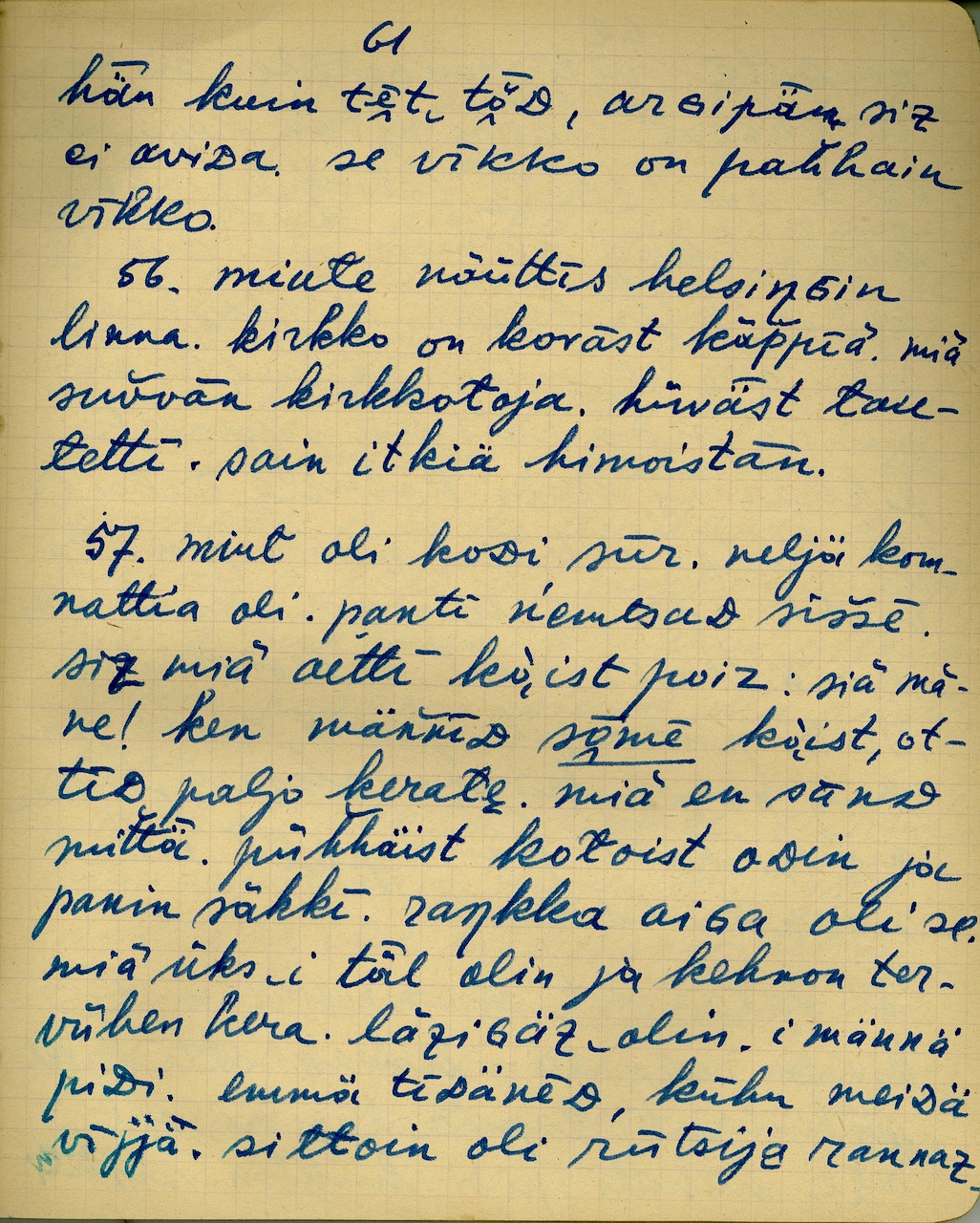
Typological shift in Estonian and Southern Finnic (ESTTYP)
Events
2025
12-14 June
Helle Metslang and Uldis Balodis participated in the conference “LCU 2025: Areal linguistics and language contact of Uralic languages. Language-specific and typological approaches.” at the National Library of Latvia in Rīga and gave the presentation “Language change and contact in southern Finnic: An areal typological study” on behalf of the entire project group. The slides of the presentation can be accessed here. LCU 2025 was organized by the University of Latvia Livonian Institute and the University of Potsdam. (Photo 1: Uldis Balodis, Photo 2: Gunta Kļava)

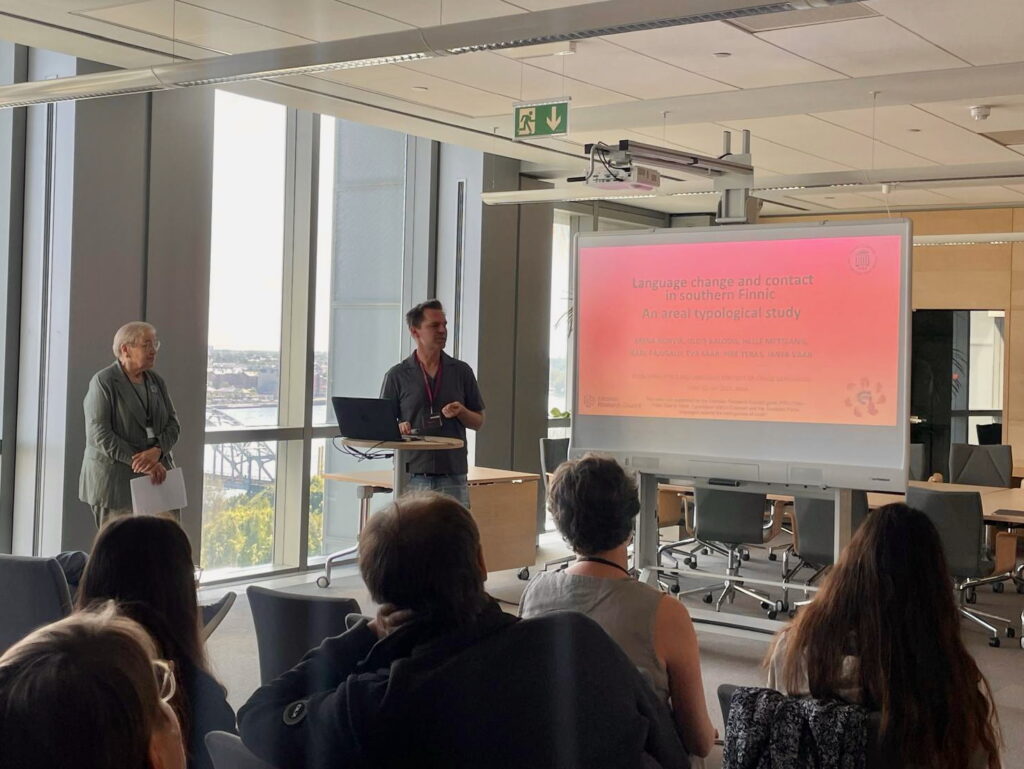
28-31 May
Karl Pajusalu and Uldis Balodis participated – with their colleague Jüvä Sullõv (Sulev Iva) of the Võro Institute – in the conference “The Formation of Literary Standard in the Languages of the Amber Road Region”, which was organized by the University of Tokaj in cooperation with the Collegium Fenno-Ugricum, the Hungarian National Organization of the World Congress of Finno-Ugric Peoples, and the Hungarian Ministry of Culture and Innovation in Badacsonytomaj, Hungary. This conference brought together scholars from the entire Amber Road Region – stretching from the Baltic-Nordic countries to Central Europe to discuss the historical formation of literary standards across this region and how this process continues up to the present. Karl Pajusalu gave the presentation “Raamat, kiri, kirjakeel: The Development of Basic Concepts in Written Estonian” and Uldis Balodis gave the presentation “Lutsi and Livonian: Perspectives on Finnic Orthographies in Latvia”. (Photo 1: Uldis Balodis, Photo 2: Lidija Leikuma)
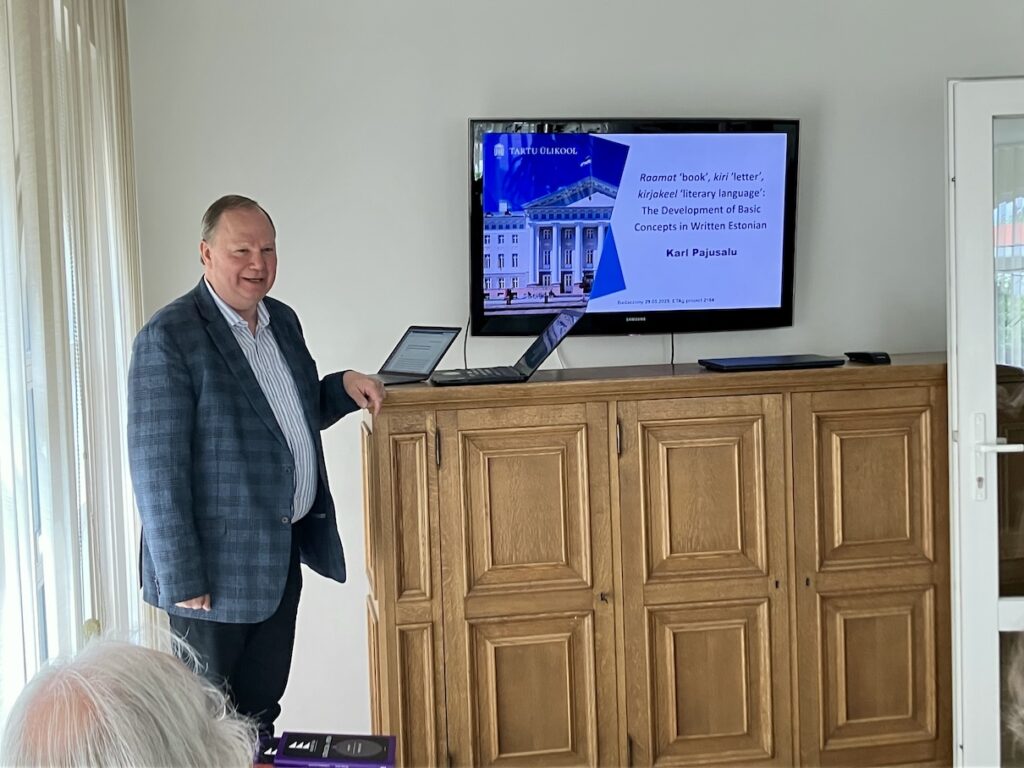
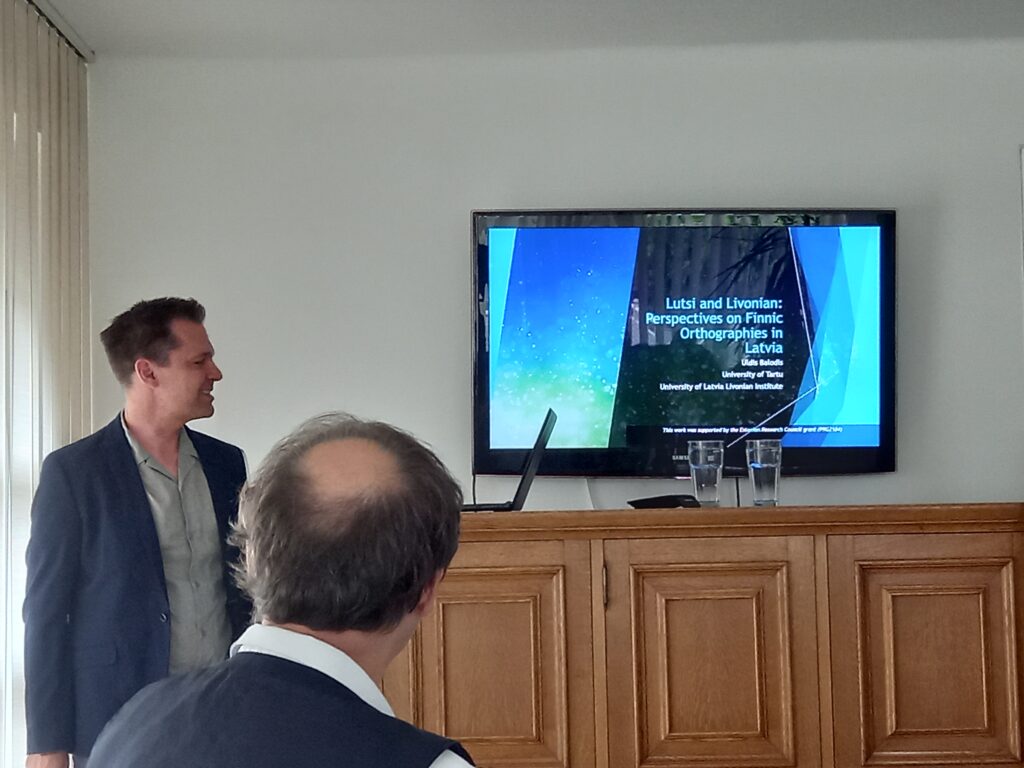
27 May
Karl Pajusalu and Uldis Balodis participated in the seminar “The Development of the Estonian and Livonian written languages. A seminar in honor of the 500th anniversary of the Estonian and Livonian book.” (Eesti ja liivi kirjakeele areng. Seminar eesti- ja liivikeelse raamatu 500. aastapäeva auks.) at the Eötvös Loránd University (ELTE) Department of Finno-Ugric Studies (Budapest, Hungary) with colleague Jüvä Sullõv (Sulev Iva) of the Võro Institute and their colleagues from ELTE. Opening words were delivered by Anu Kippasto (Desk Officer and Consul, Embassy of Estonia, Budapest) and András Bereczki (Head of the Department of Finno-Ugric Studies, ELTE). Karl Pajusalu gave the presentation “Five hundred years of book history in Estonia and Livonia” (Pooltuhat aastat Eesti- ja Liivimaa raamatulugu) and Uldis Balodis gave the presentation “Livonian and Lutsi: the making of Finnic written languages in Latvia”. (Photos 1, 2: Uldis Balodis, Photo 3: Jüvä Sullõv)
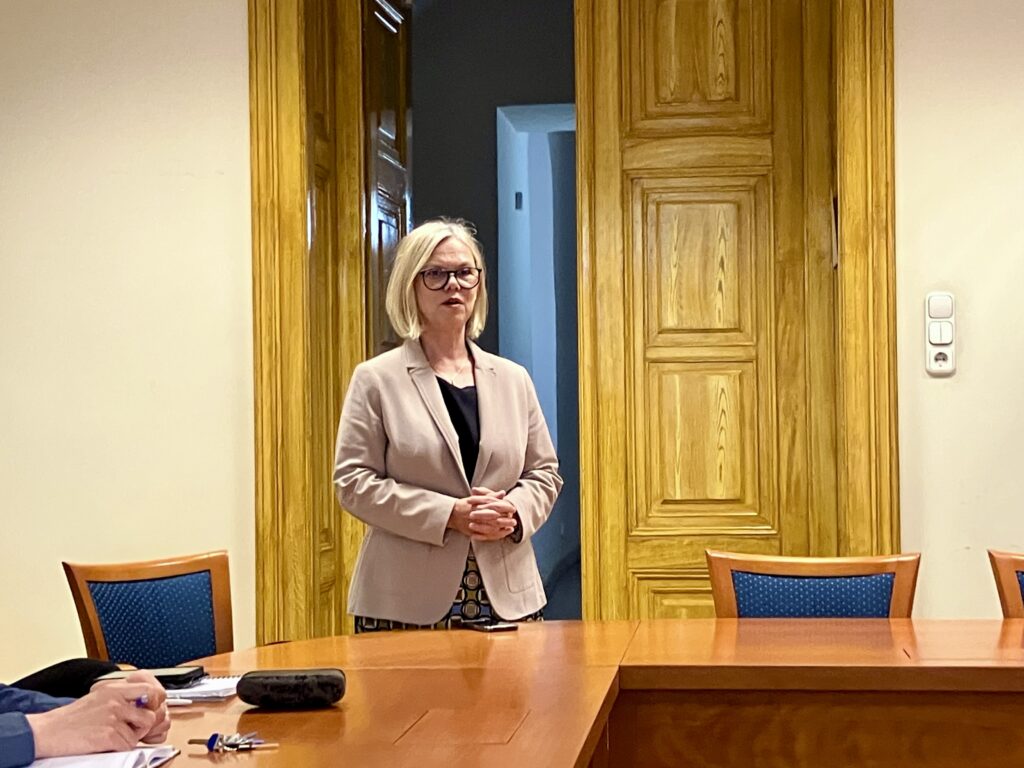
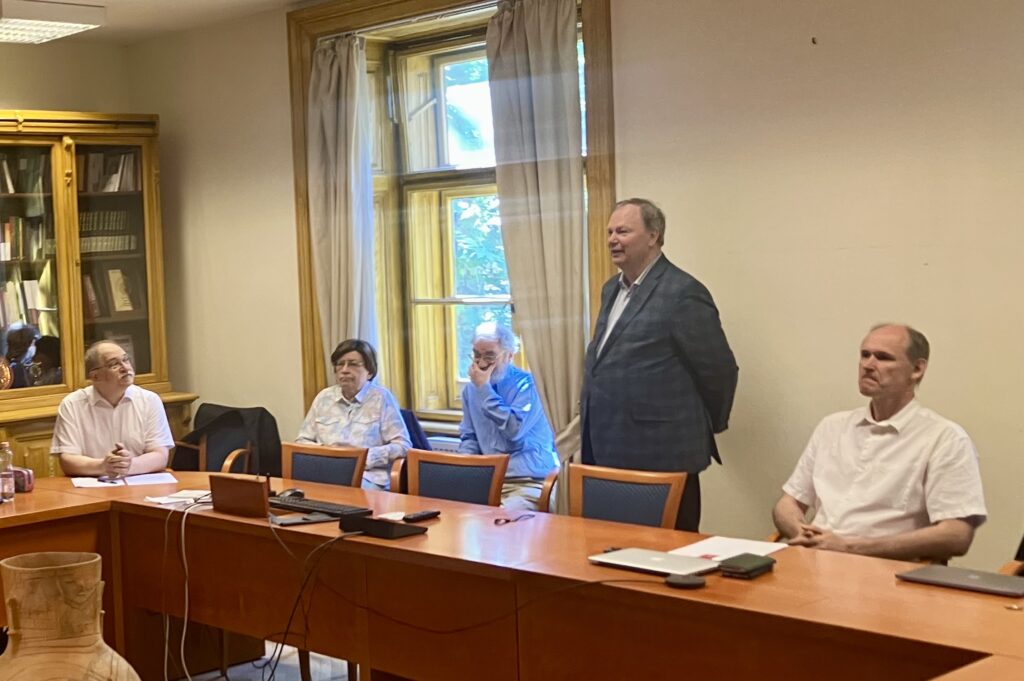
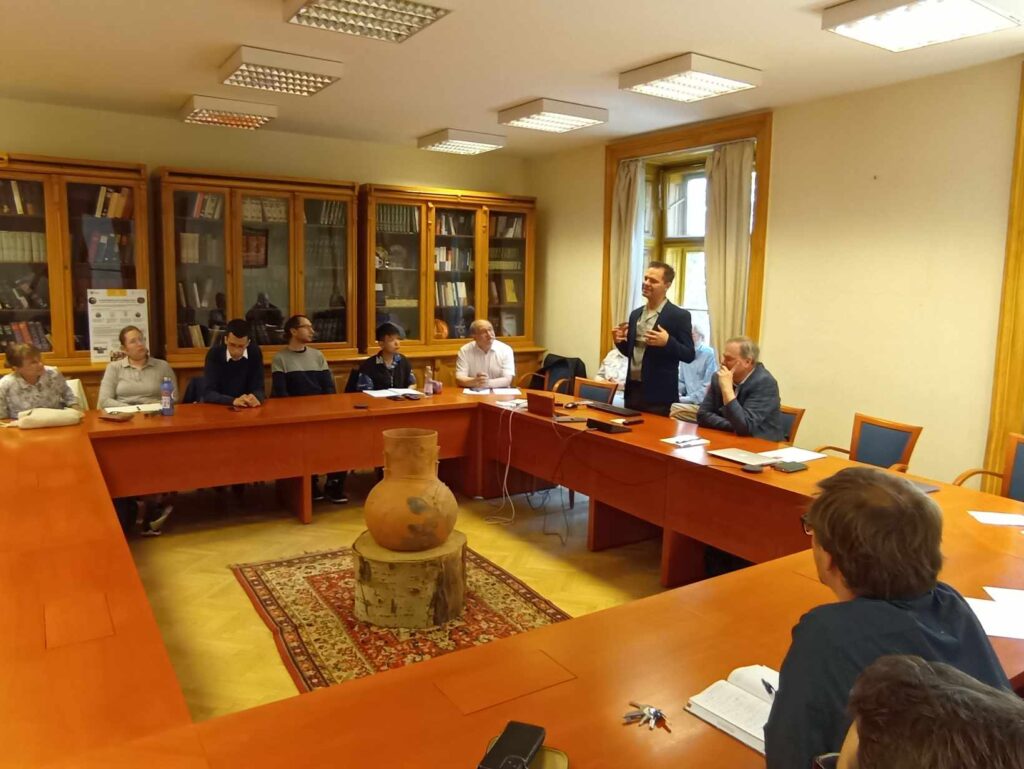
23-24 May
Karl Pajusalu served as the co-organizer of the Latvian-Estonian joint conference “500 years of Latvian and Estonian books and written languages” at the National Library of Latvia in Rīga, bringing together scholars from across the Baltic-Nordic region in celebration of the 500th anniversary of the publication of the first Estonian and Latvian book as well as honoring the development of written and standard forms of other languages of Latvia and Estonia including Livonian, Latgalian, Võro, and Lutsi. Karl Pajusalu and the other organizer of this joint conference – Pēteris Vanags (Stockholm University) – presented a detailed overview in the presentation “500 years of Estonian and Latvian written languages: similarities and differences”. Karl Pajusalu also gave the presentation “Regionality in Old Written Estonian”, while project researcher Uldis Balodis gave the presentation “Writing Lutsi and other Finnic varieties of Latvia”. (Photos 1, 3: Uldis Balodis, Photo 2: Valts Ernštreits)
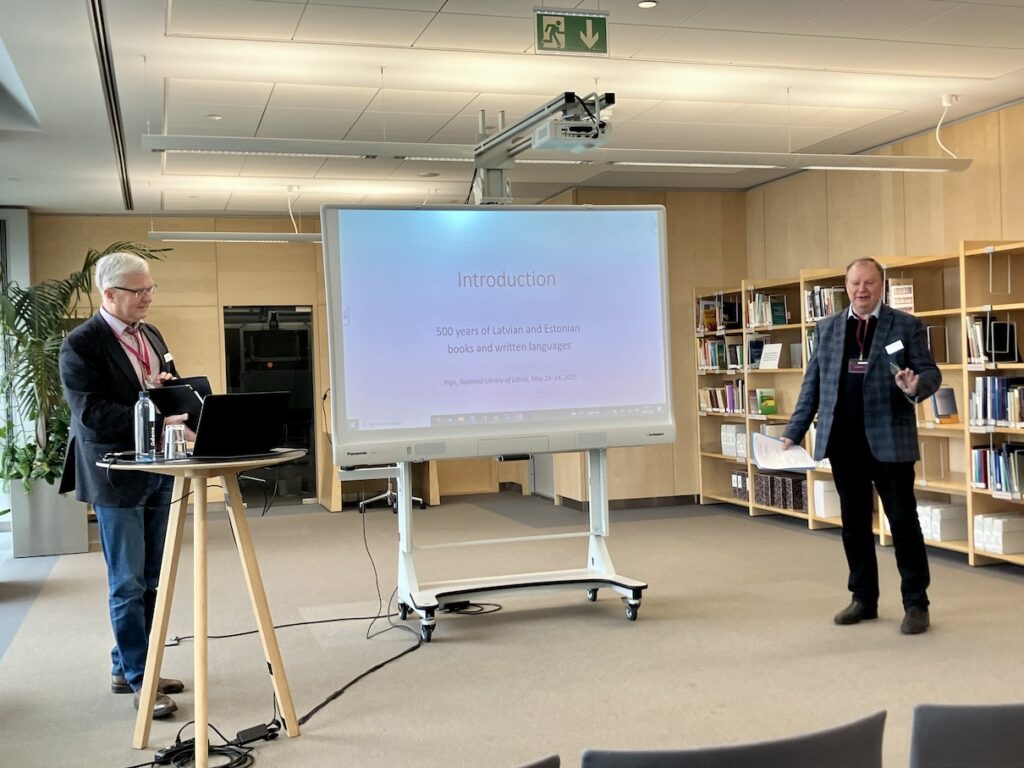
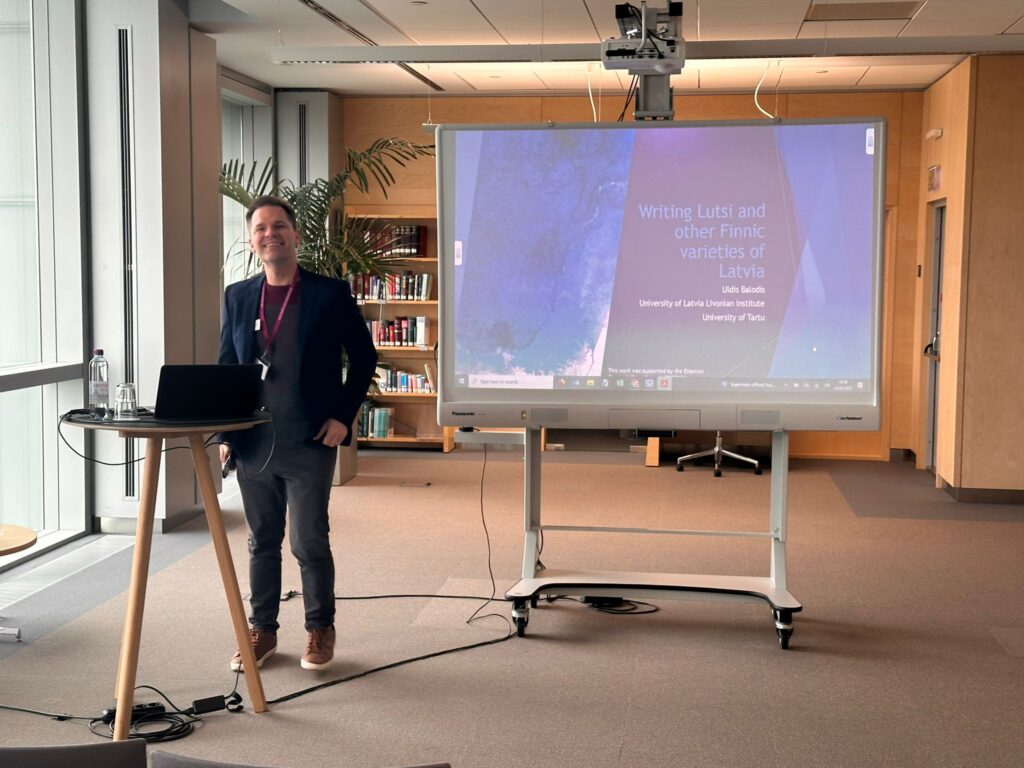
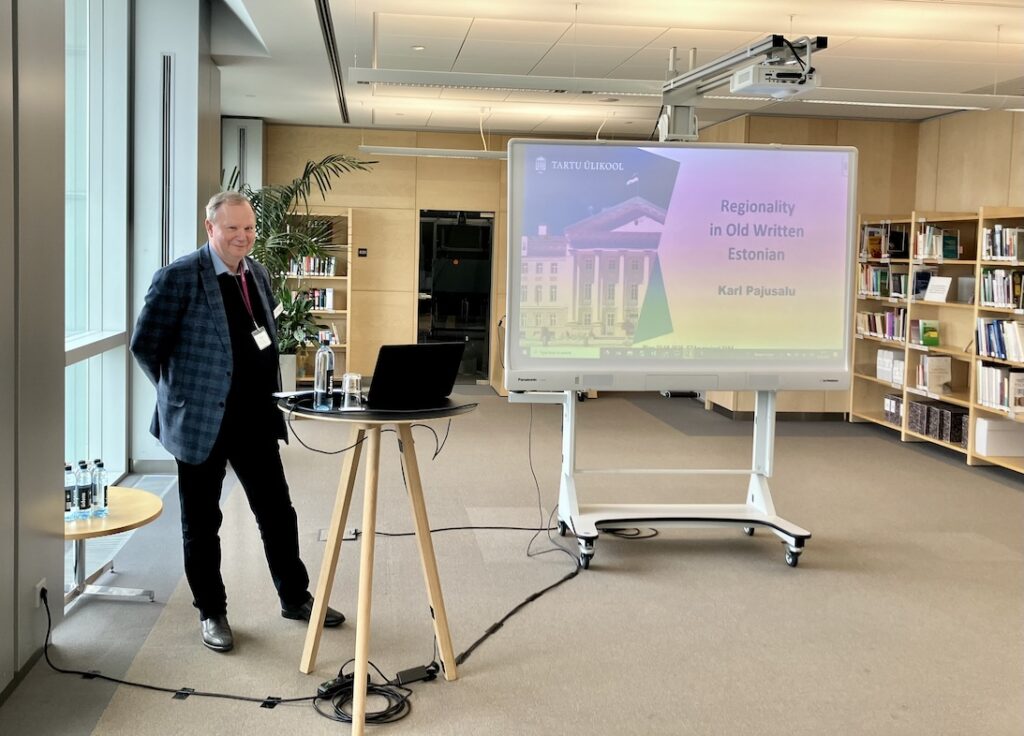
16-18 May
Miina Norvik, Karl Pajusalu, Tuuli Tuisk, and Uldis Balodis participated with colleagues from the University of Latvia Livonian Institute in a seminar and planning meeting of the Livonian Grammar Working Group in Kuoštrõg (Košrags) village on the Livonian Coast in NW Latvia. The working group was updating its members on progress towards the completion of a Livonian reference grammar. During these days, Uldis Balodis, Tuuli Tuisk, Miina Norvik, Karl Pajusalu, and other members of the working group also conducted interviews and fieldwork with Livonian community members in the historical Livonian villages on the Livonian Coast. (Photos 1, 2, 3: Tuuli Tuisk, Photo 4: Uldis Balodis)
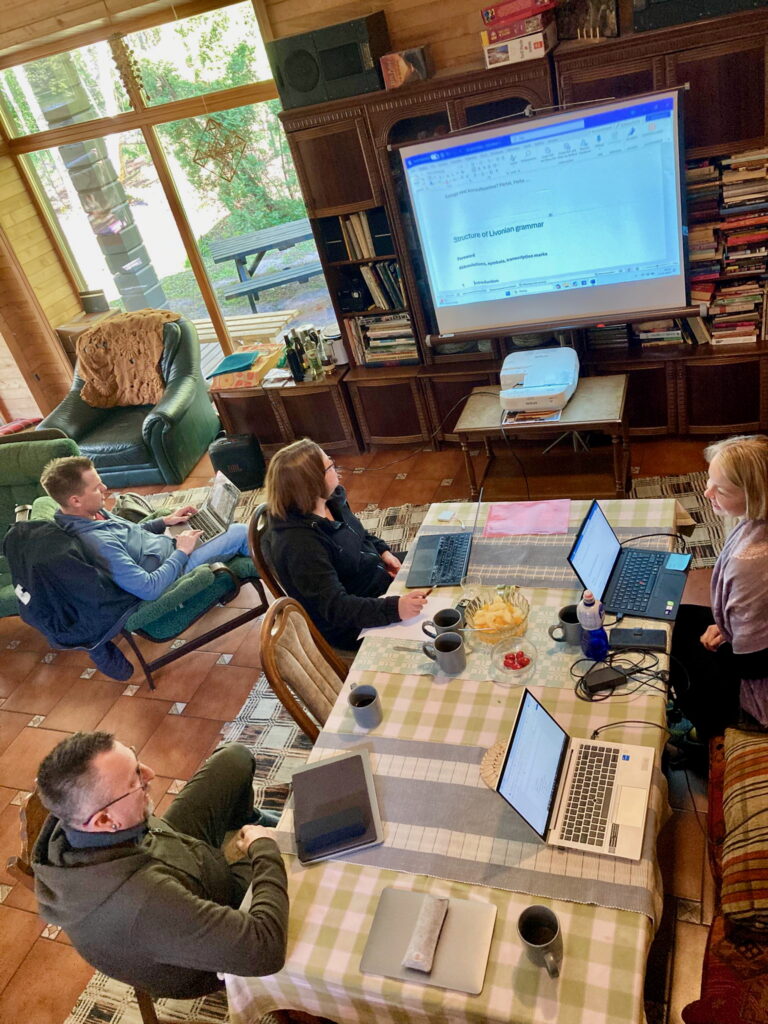
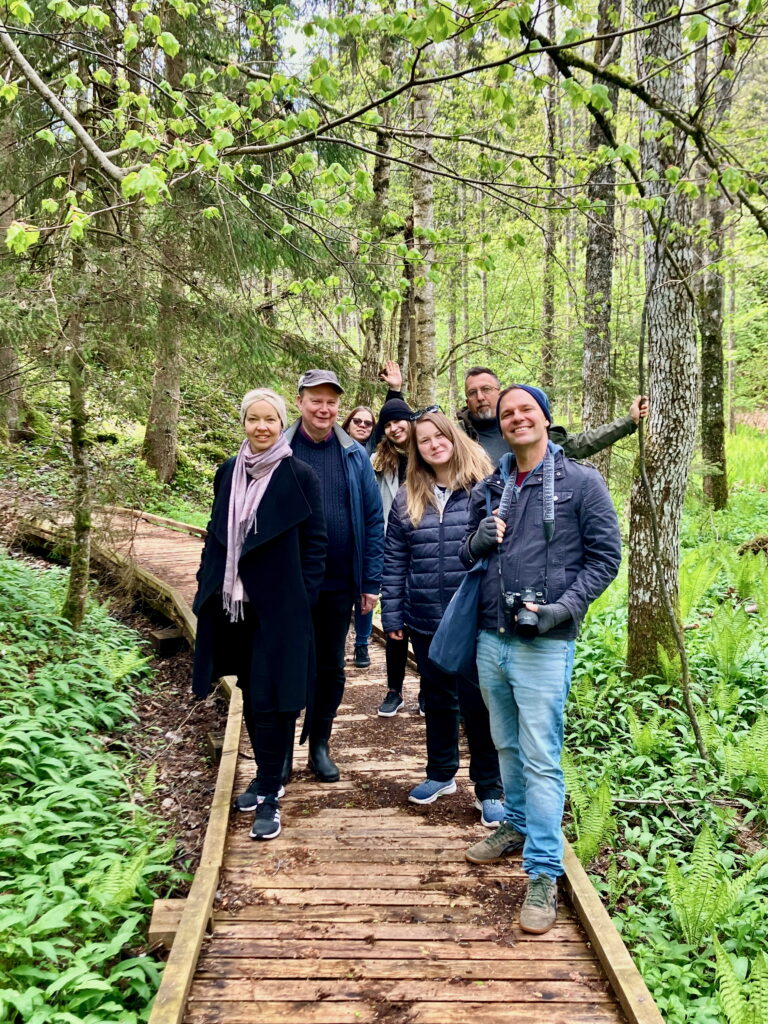
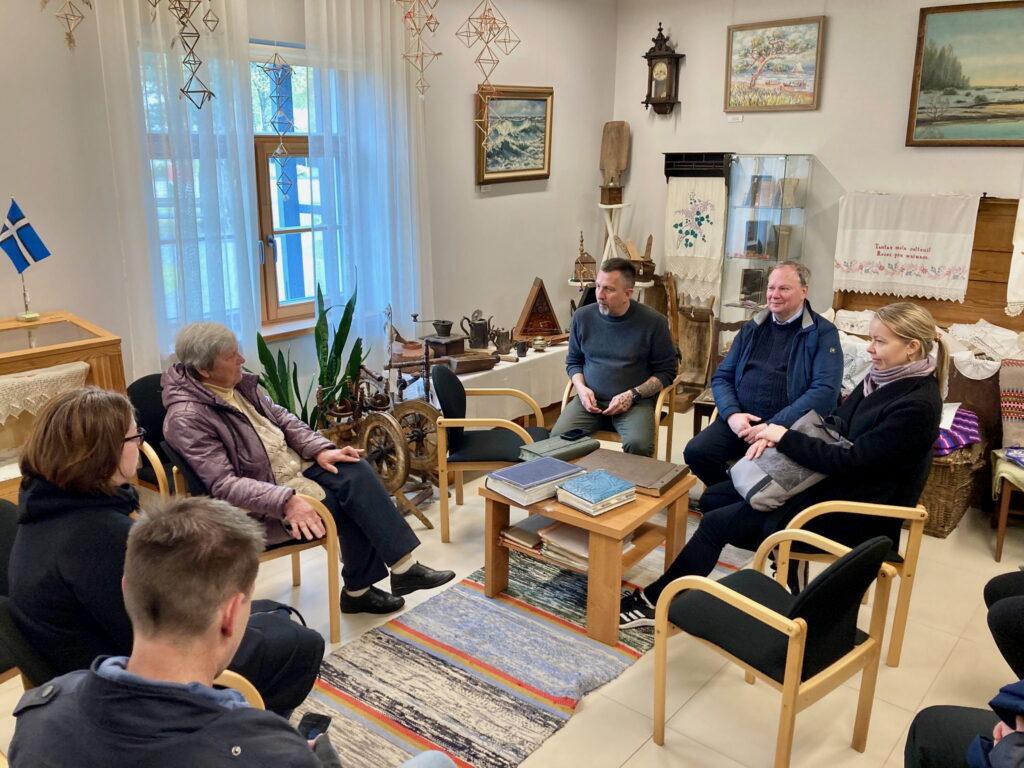
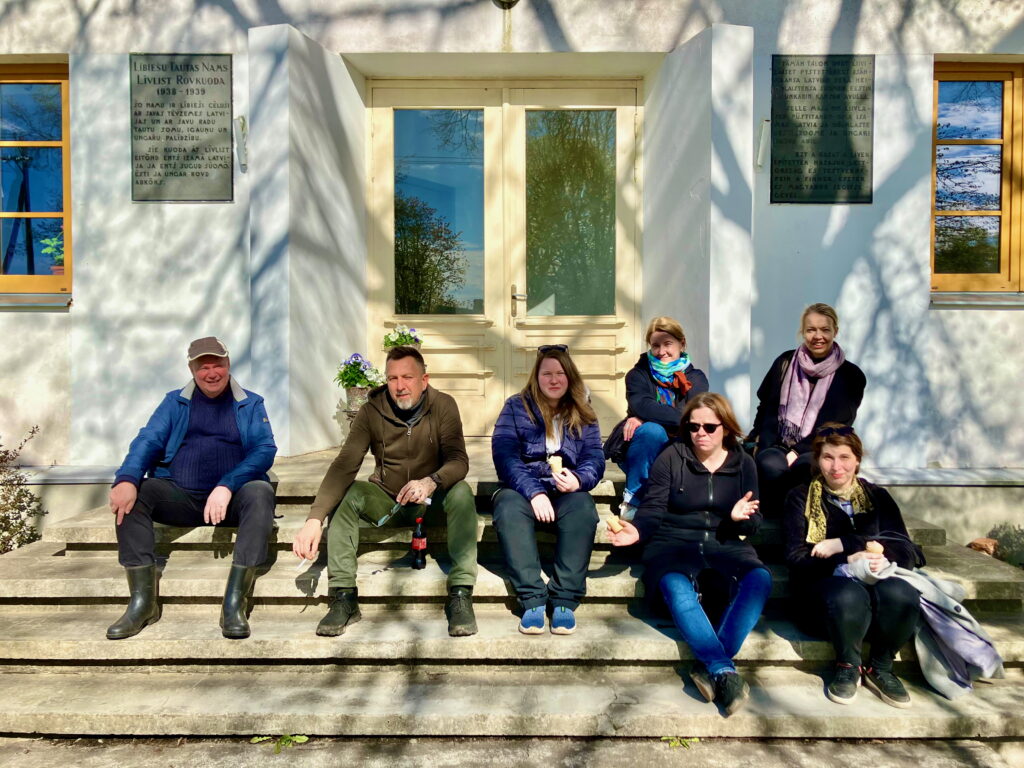
29 April
Karl Pajusalu and Uldis Balodis participated in work conducted by the Mulgi Dictionary Group at the Heimtali Museum (a division of the Estonian National Museum) in Heimtali, Viljandi County. The dictionary group was working with the esteemed textile artist and scholar Anu Raud in order to record Mulgi vocabulary associated with knitting and traditional textile patterns. The photos show the Mulgi Dictionary Group with Anu Raud as well as the outside of the Heimtali Museum. (Photos: Uldis Balodis)
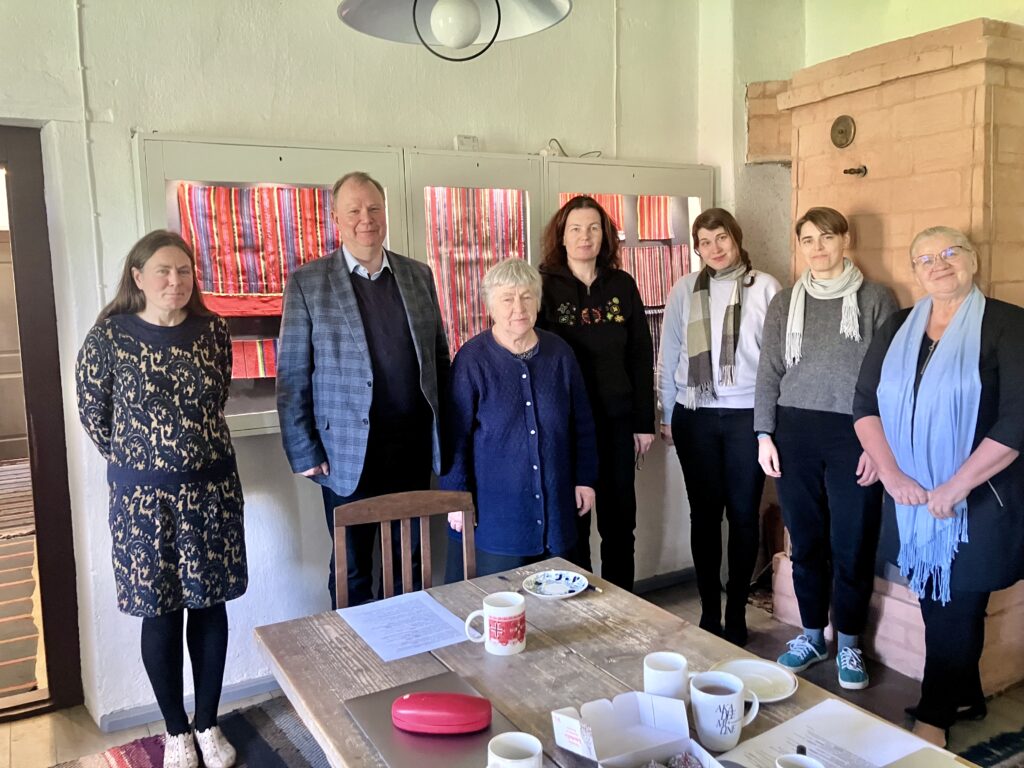
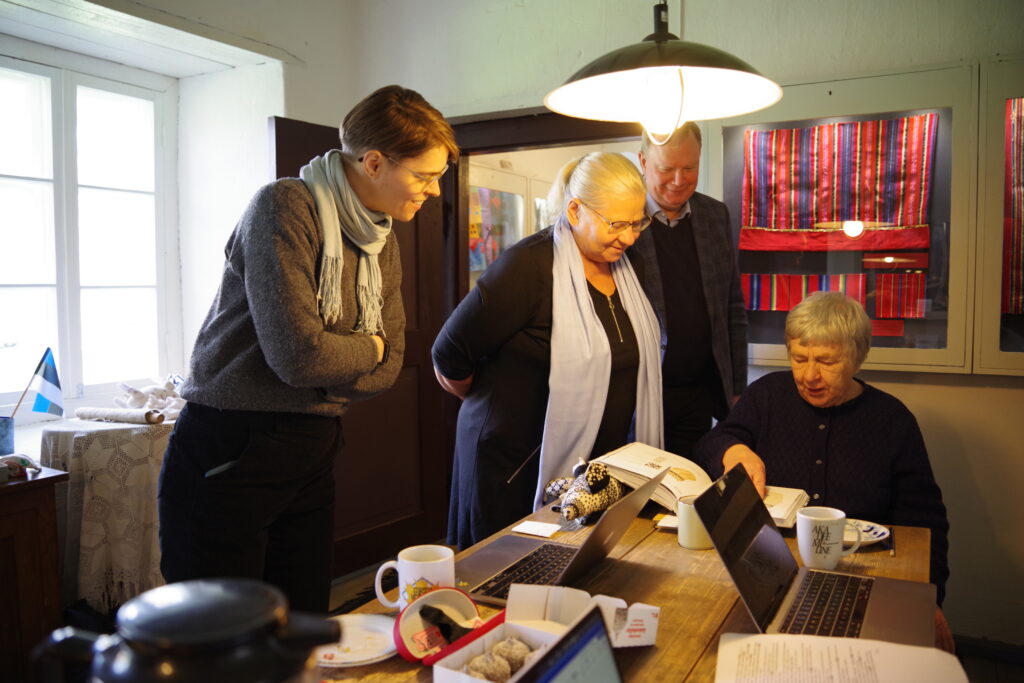
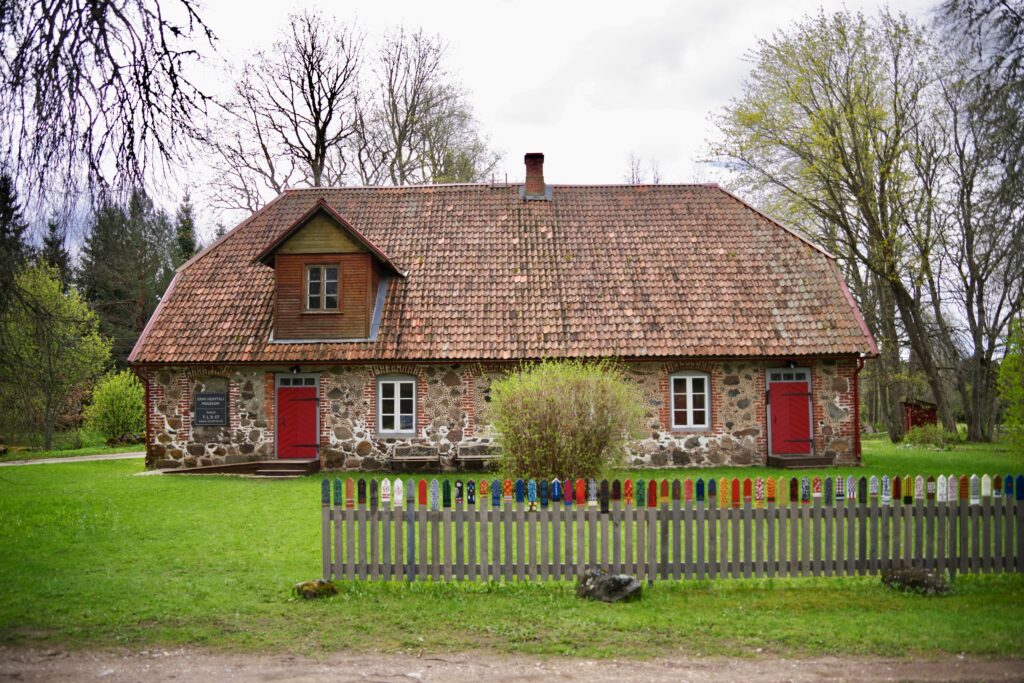
28 April
Uldis Balodis met with members of the non-profit organization Hõimulõimed and spoke to them about Lutsi language, culture, and history and his work with Lutsi and Livonian. Hõimulõimed is an NGO representing the younger generation of the Finno-Ugric movement in Estonia.
27 April
Karl Pajusalu and Uldis Balodis conducted fieldwork in Rozumegi village and homestead (Šķilbēni parish, Balvi Municipality, Latvia), which is at the center of a cluster of Estonian-like place names in NE Latvia, which are not associated with any known historic community of Estonian speakers in this area. Uldis Balodis and Karl Pajusalu visited Rozumegi to interview local residents and understand whether there was any memory of Estonian language and family connections with Estonia. The photo shows Aldis Prancāns in front of his home in Rozumegi. (Photo: Uldis Balodis)
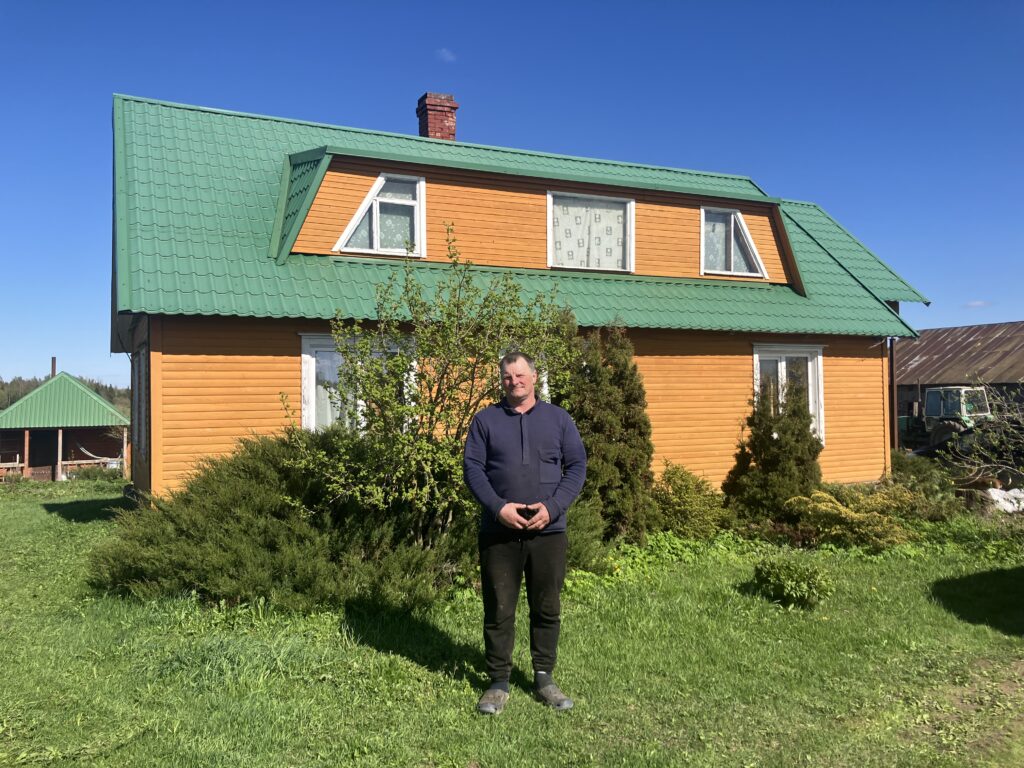
14-15 April
The project working group organized the “Latgalian, Malenian, and South Estonian Studies Seminar” at the Institute of Estonian and General Linguistics at the University of Tartu. The working group invited three colleagues from Latvia – Lidija Leikuma (University of Latvia), Dace Markus (Liepāja University), Anna Stafecka (University of Latvia) – who are experts on Latgalian, Malenian, and the subdialect features of Latvian. The first day of the seminar was run by project member Uldis Balodis who presented an overview of the history of the Finnic languages in Latvia in his presentation “Finnic language history and contacts in Latvia”. This was followed by the presentations given by the Latvian colleagues on their areas of expertise – “Possible Finnic influence in Latvian subdialects” (Iespējamās somugru valodu pēdas latviešu valodas izloksnēs) (Anna Stafecka), “Malenians and Estonians: Language and life” (Malēnieši un igauņi: valoda un sadzīve) (Dace Markus), “The main phonetic and morphological characteristics of Latgalian” (Latgaliešu valodas galvenās iezīmes fonētikā un morfoloģijā) (Lidija Leikuma). The second day of the seminar was run by project member Miina Norvik and focused on working with the Latvian colleagues to enter information for Latgalian and Malenian in the EstTyp database. (Photo 1: Janek Vaab, Photos 2-5: Dace Markus, Photo 7: Uldis Balodis)
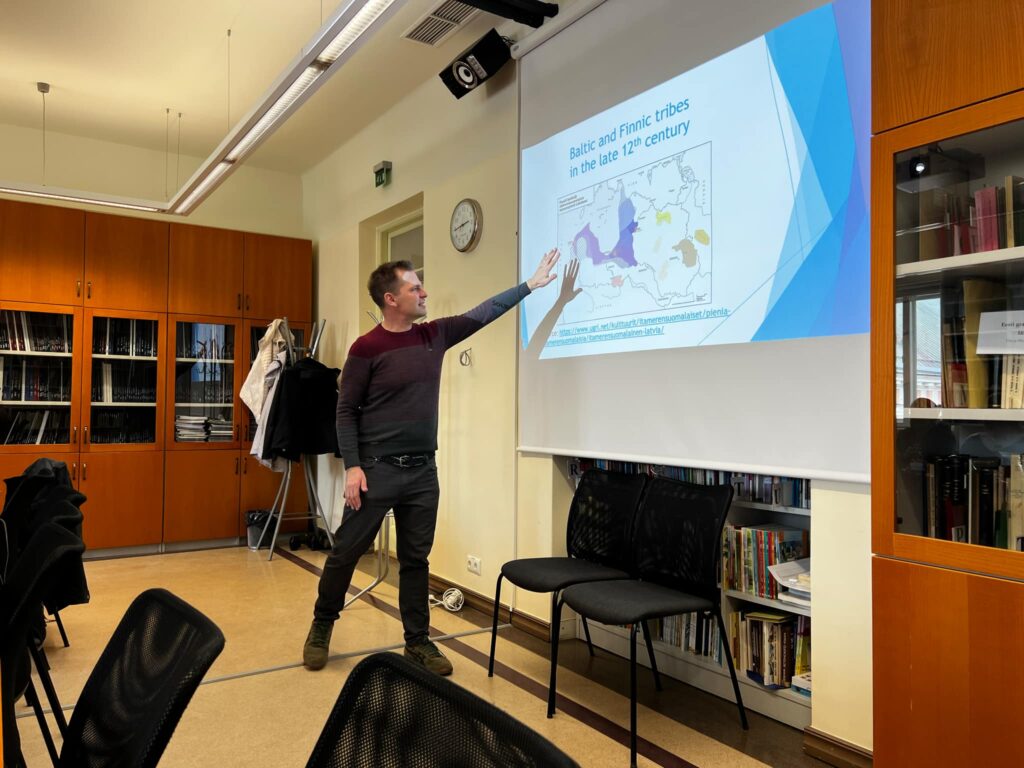
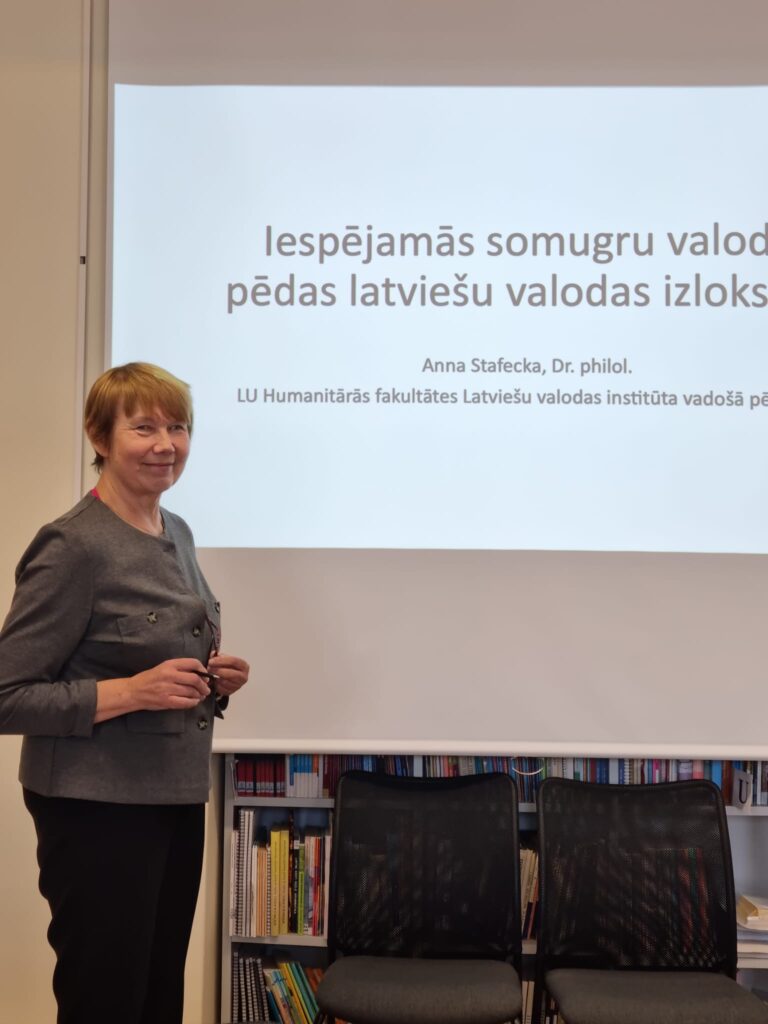
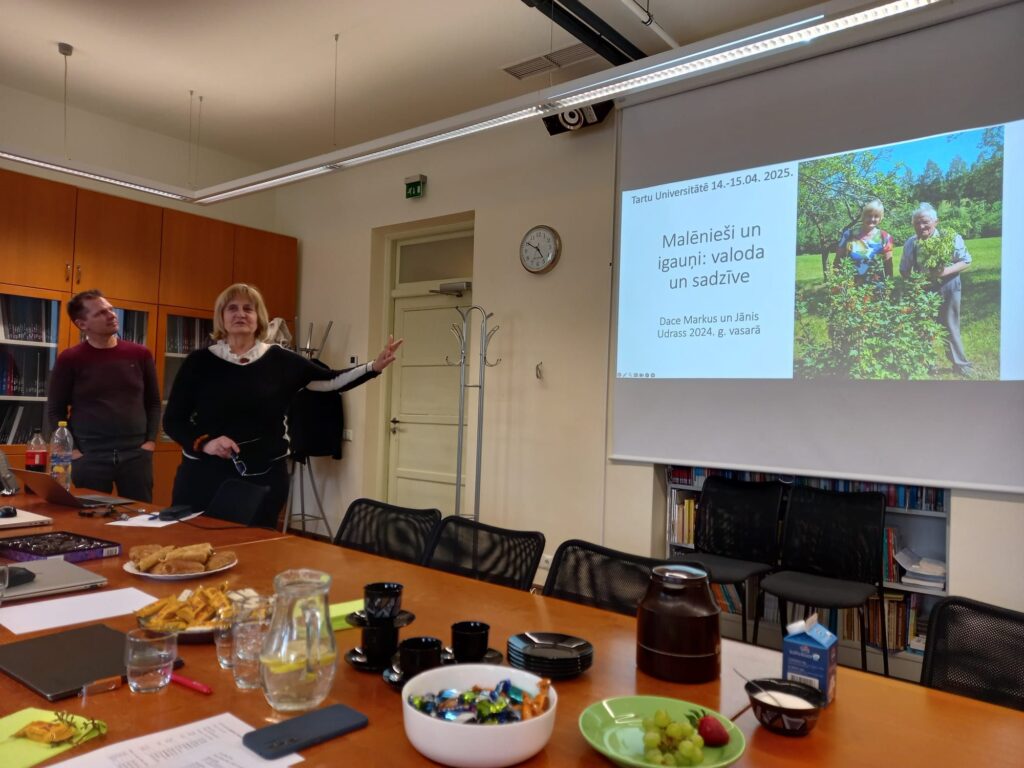
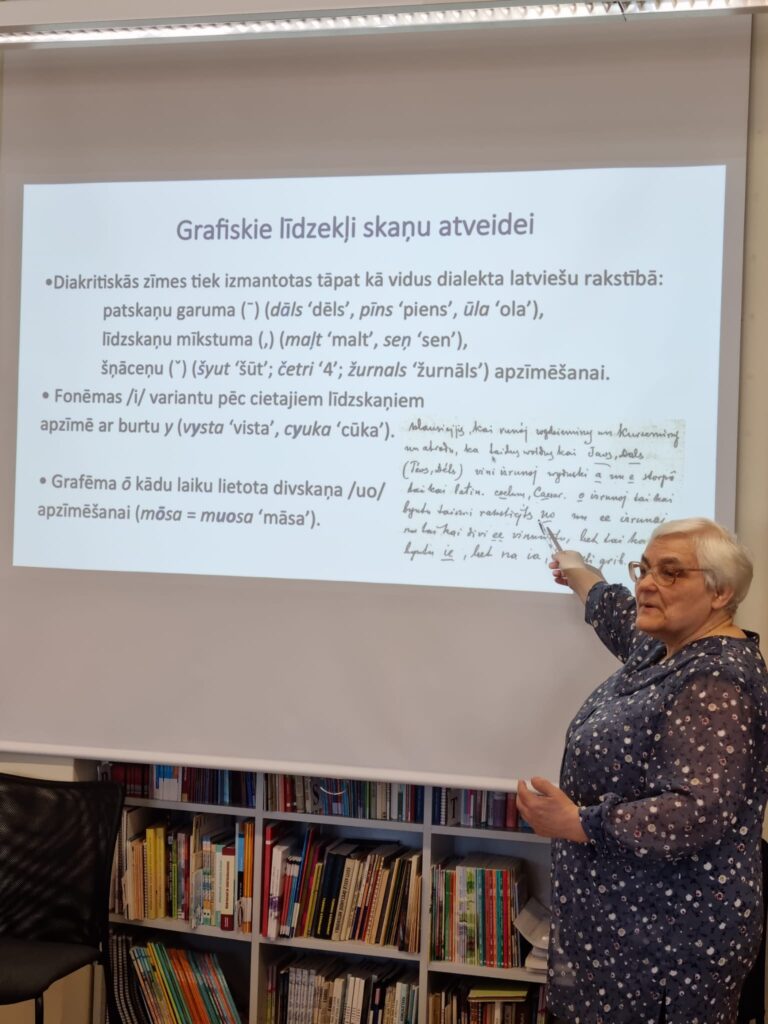
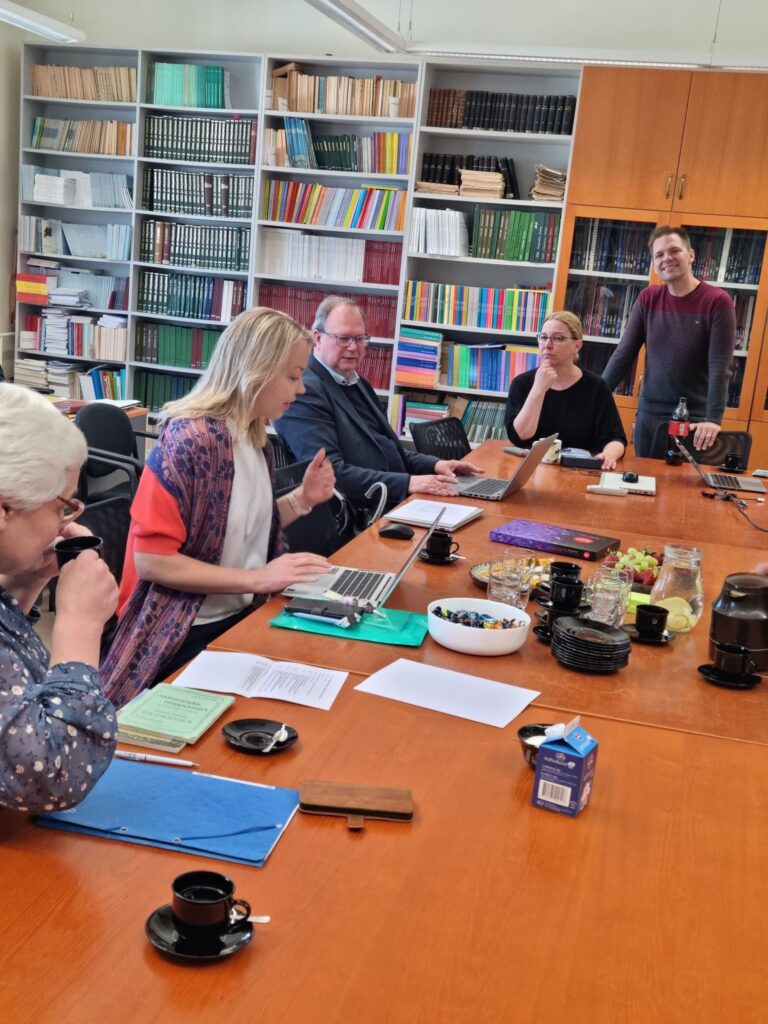
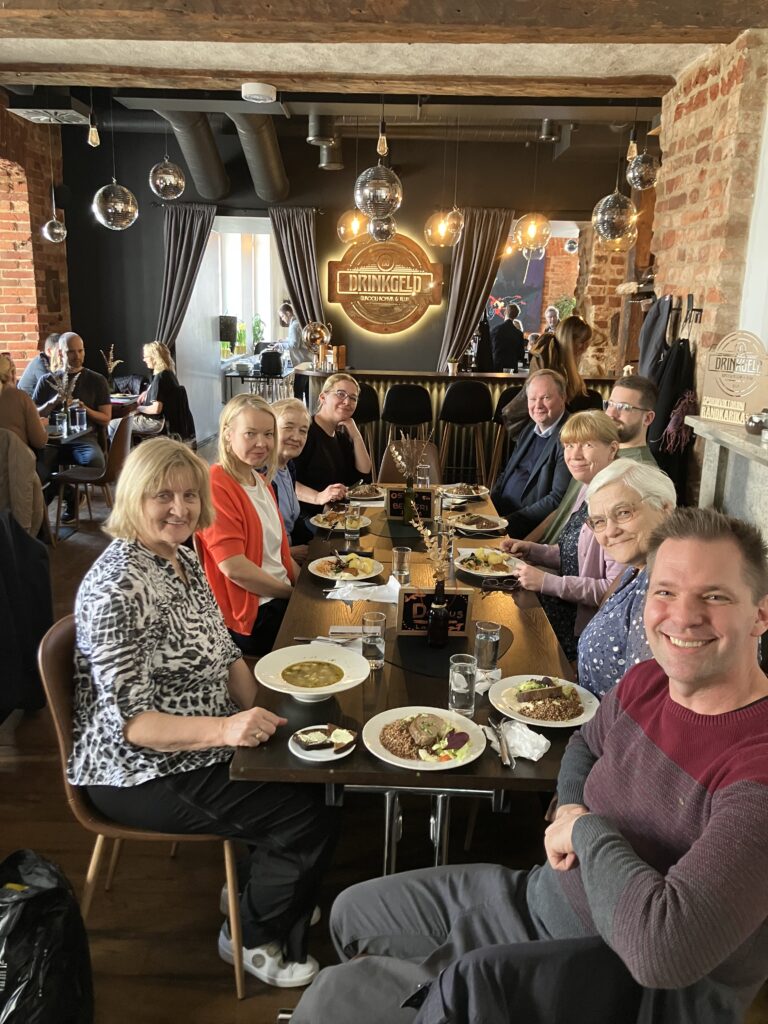
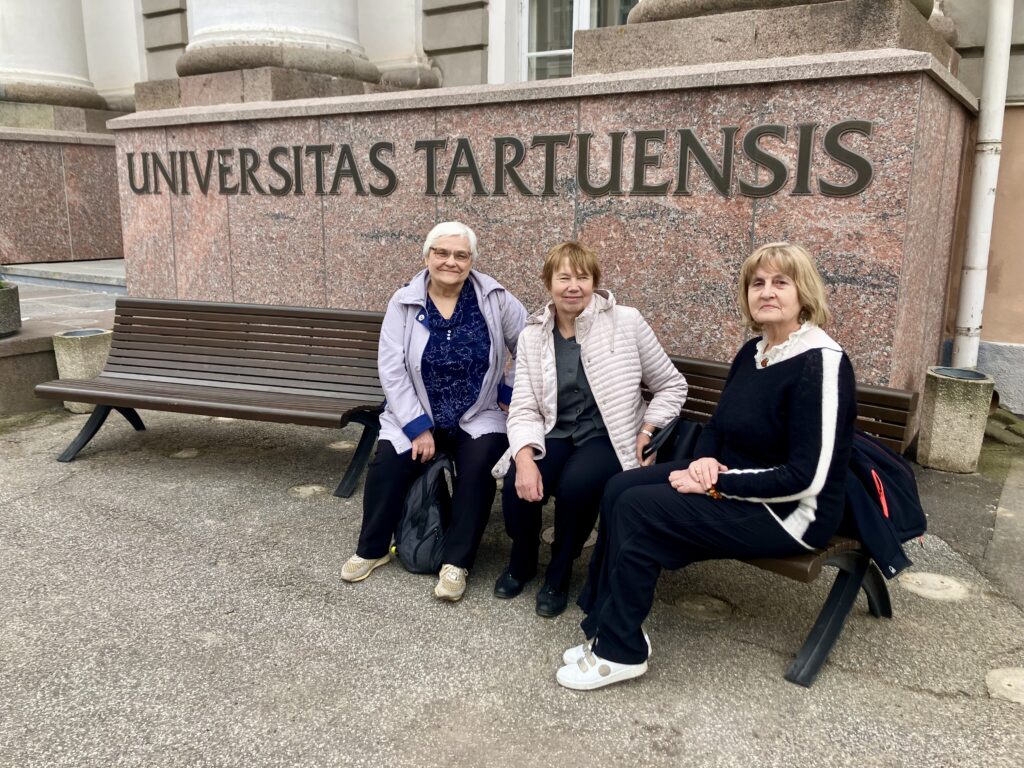
13 April
Karl Pajusalu and Uldis Balodis conducted fieldwork in Sääritsa village (Peipsiääre parish, Tartu County) with Eevi Treial who is one of the best living speakers of the Kodavere subdialect (Eastern dialect, North Estonian). This work was conducted at Eevi Treial’s home in Sääritsa. (Photos: Uldis Balodis)
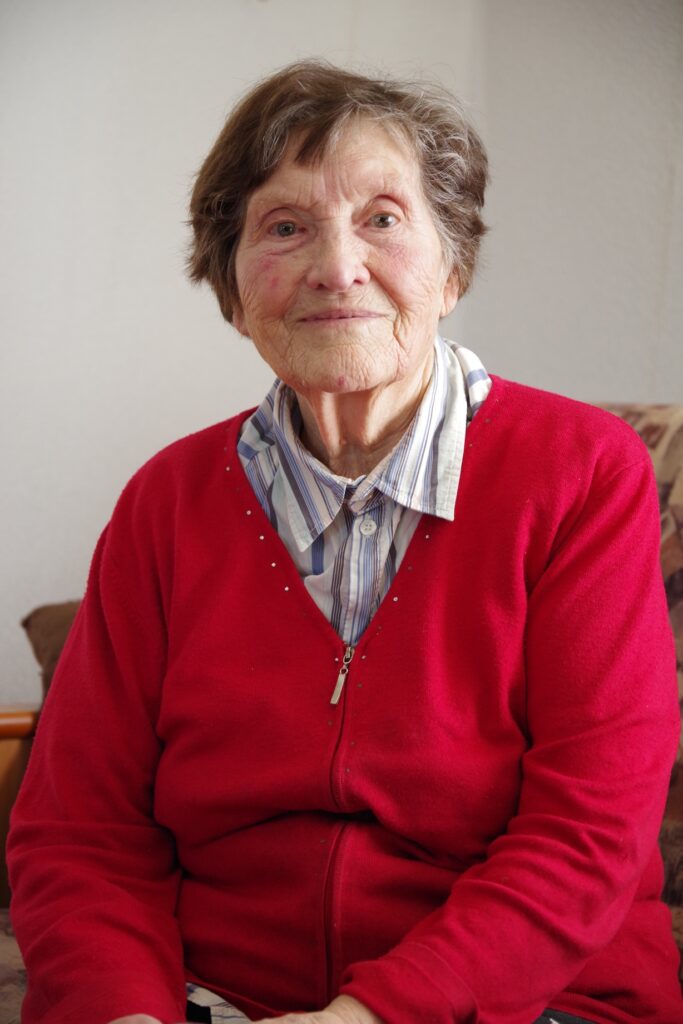
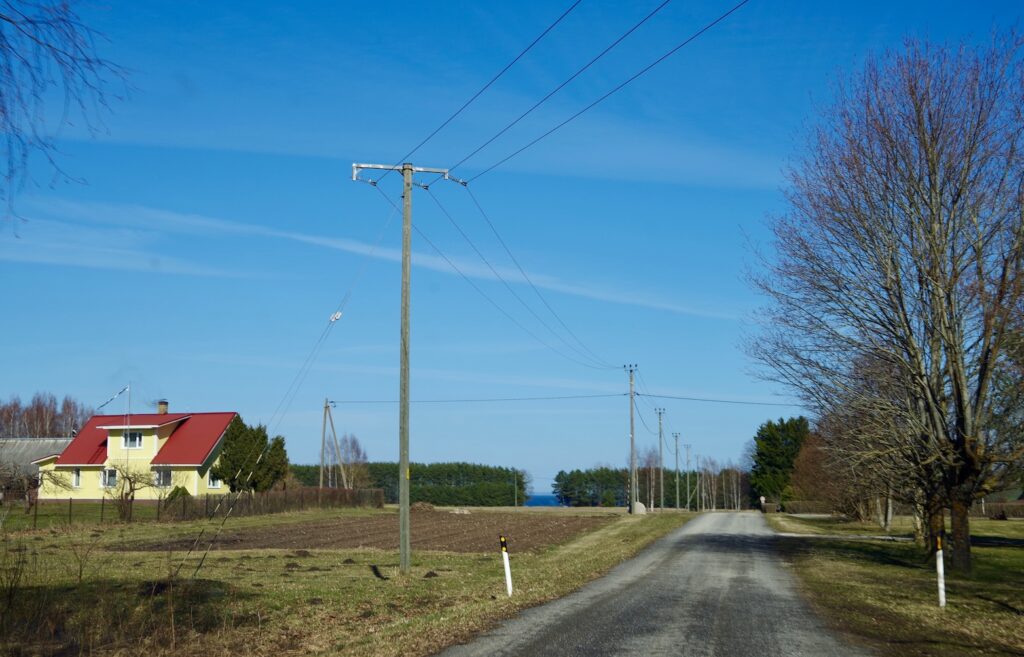
3 April
Karl Pajusalu and Uldis Balodis conducted fieldwork at Lauri-Jaani homestead located in Lepassaare village (Vastseliina parish, Eastern Võromaa) speaking with Aivar Rohtla (left) and Ervin Org (right) who are good native speakers of local Võro South Estonian. (Photos: Uldis Balodis)
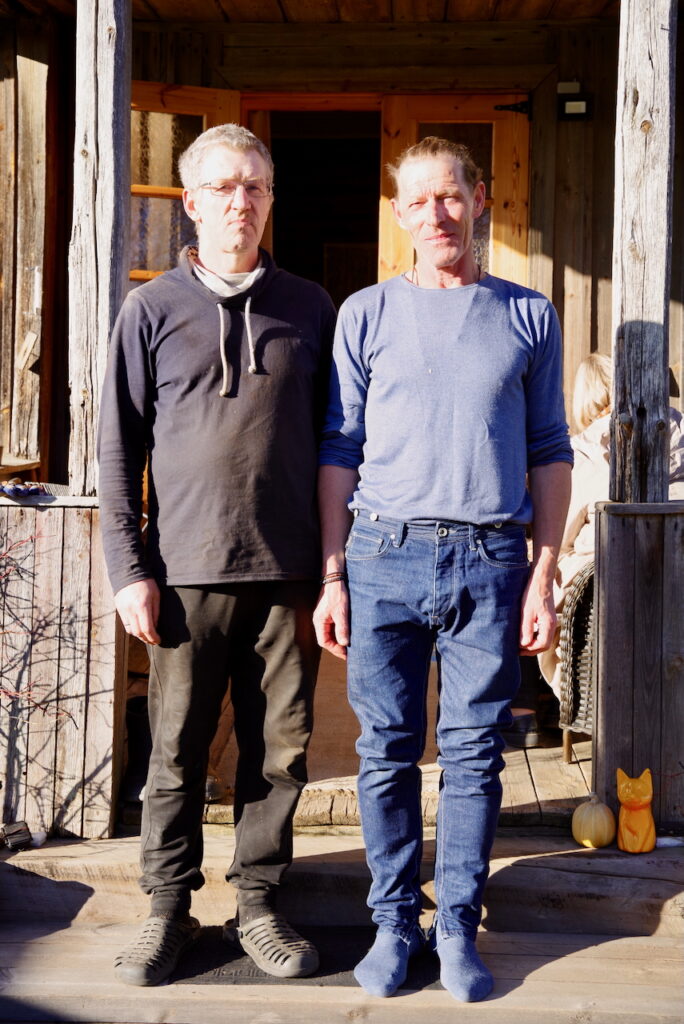
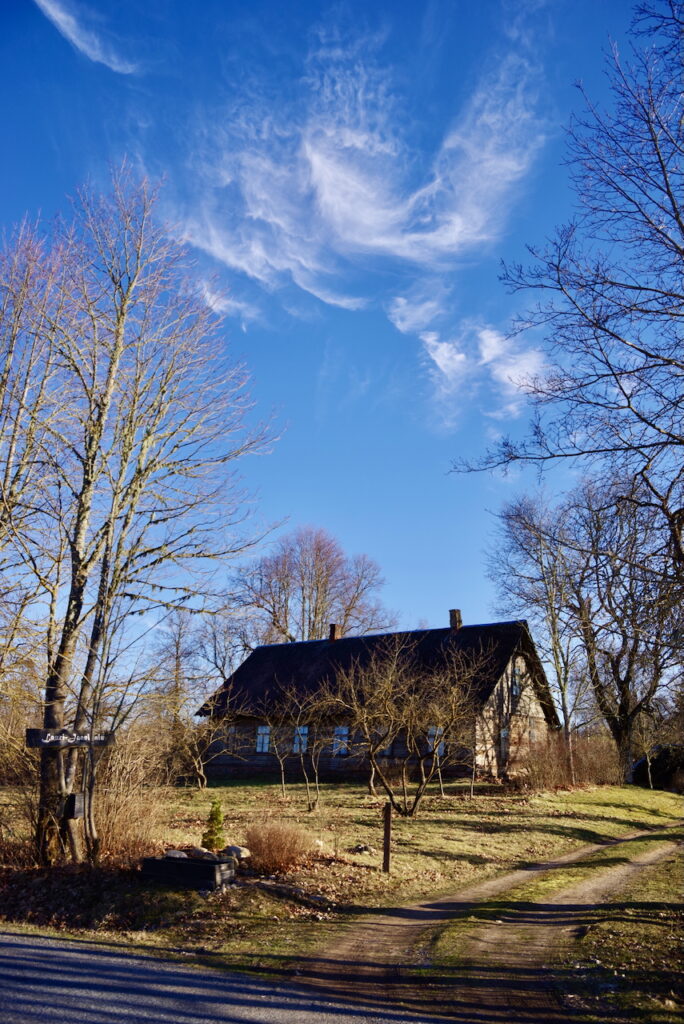
22 February
Karl Pajusalu was named an honorary citizen of Kihnu Island at a ceremony on the island in recognition of his years-long work on the Kihnu language, which, in addition to research and writing on the Kihnu language, has included work on compiling the Kihnu language dictionary and the creation of Kihnu language learning materials.
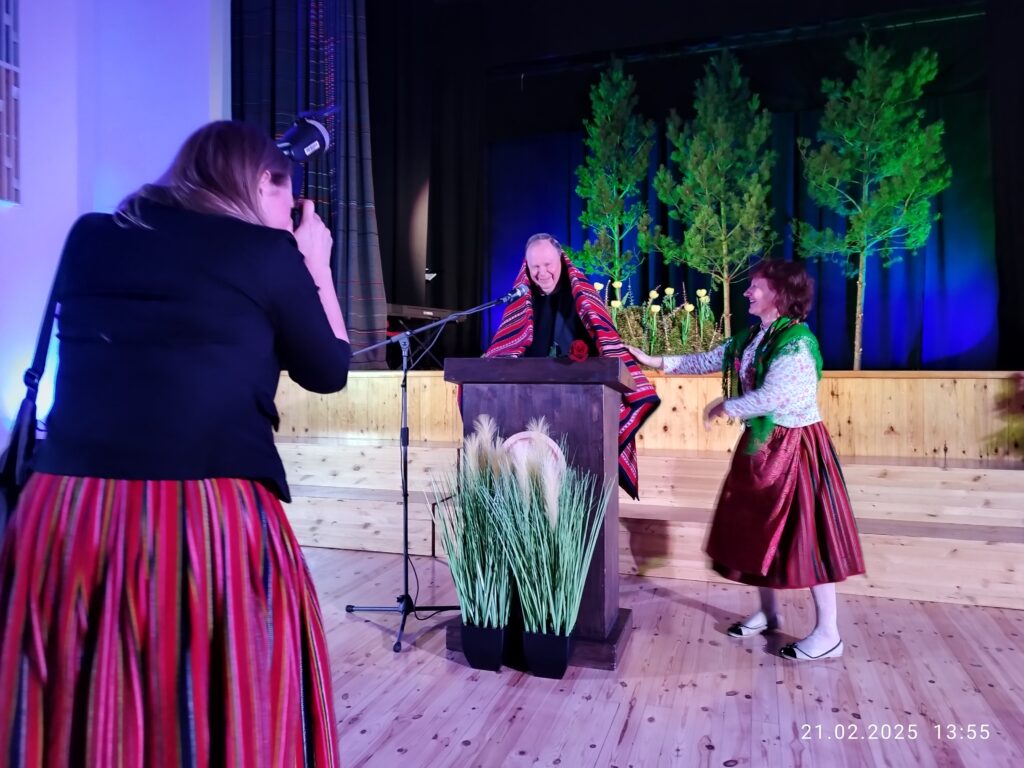
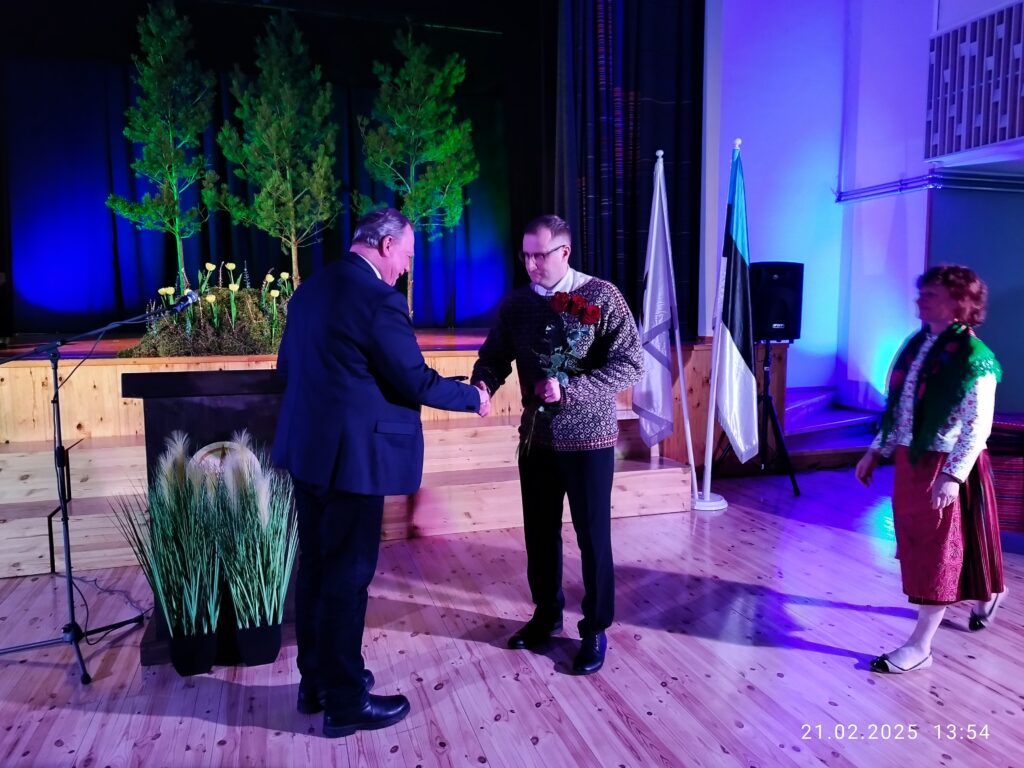
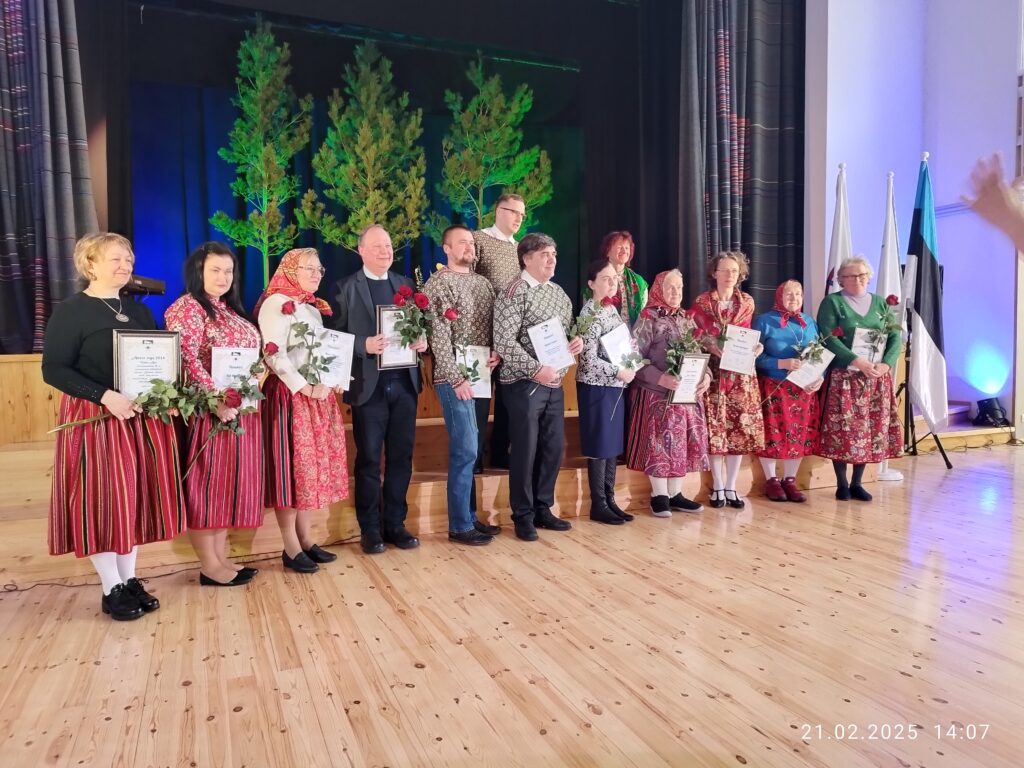
2024
28 November
Karl Pajusalu presented “Typological profiles of western Uralic languages in the light of the UraTyp and EstTyp datasets” to the Diachronic and Comparative Syntax Research Group (Institute for Historical and Uralic Linguistics) at the Hungarian Research Centre for Linguistics in Budapest discussing the goals, structure, creation, and findings of the EstTyp database.
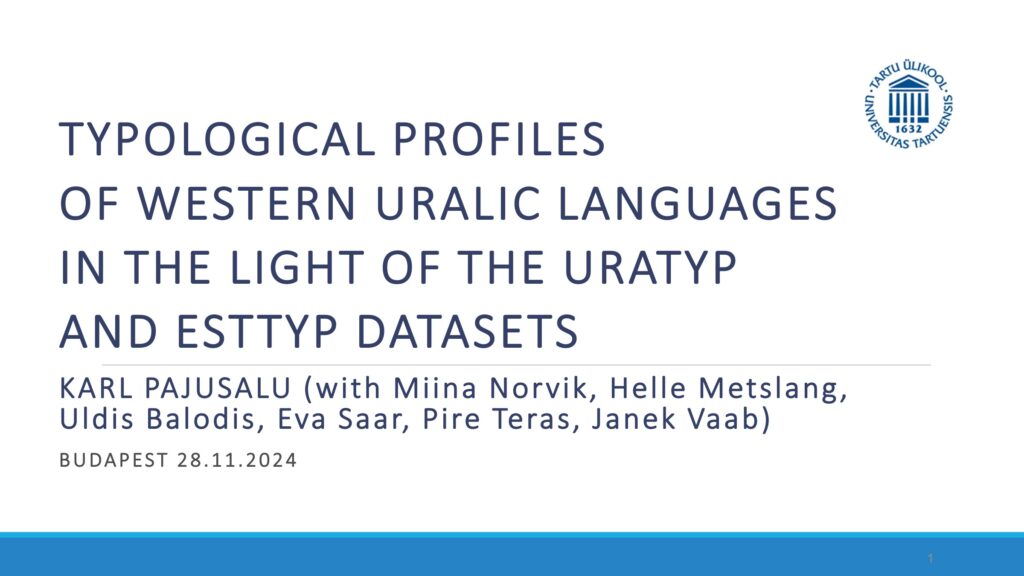
14 October
Miina Norvik, Karl Pajusalu, and Uldis Balodis participated and presented on the history of Livonian and Lutsi language research, use, and viability at the meeting of the project “Documenting and promoting Runska, the endangered Estonian Swedish dialect of Ruhnu Island”, which is led by University of Tartu Associate Professor of Swedish Language Eva Liina Asu-Garcia in cooperation with the University of Gothenburg, the Ruhnu Swedish support organization (Runöbornas förening) in Sweden, the Ruhnu Culture Space (Ruhnu Kultuuriruum), and the University of Latvia Livonian Institute. (Photo: Meeting participants with Karl Pajusalu (second from left), Miina Norvik (center back in black), Uldis Balodis (second from right))
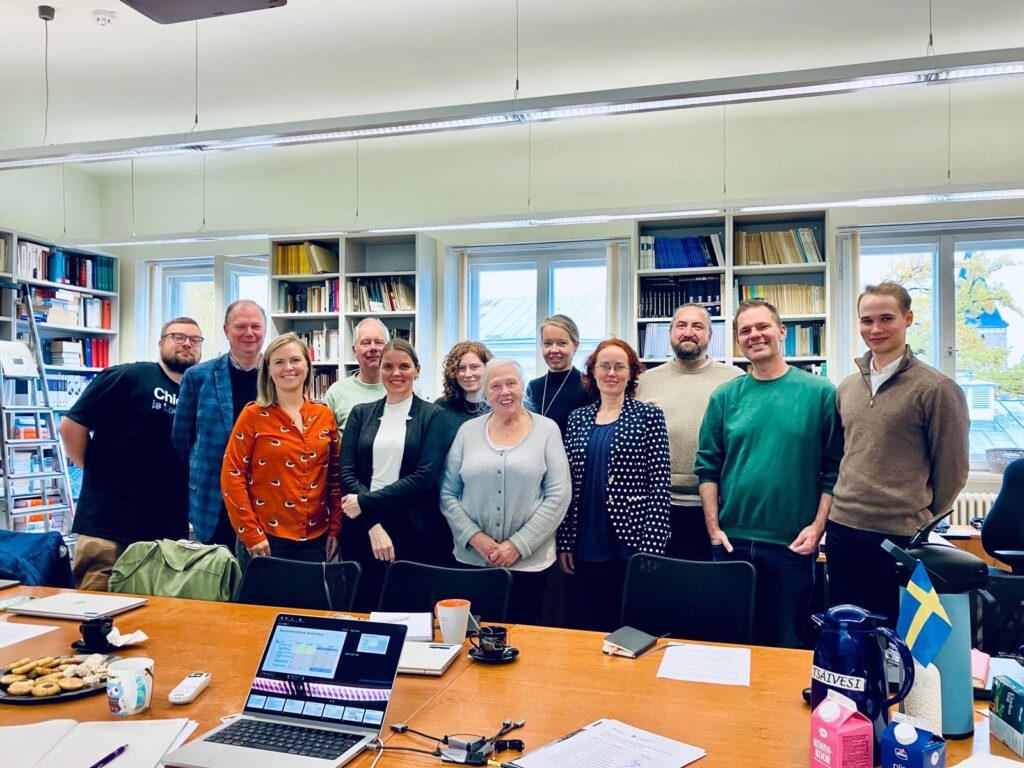
11 October
Project members co-organized the workshop “When typology meets Uralic studies: A workshop on Uralic typological databases” with colleagues at Eötvös Loránd University (ELTE) Department of Finno-Ugric Studies (Budapest, Hungary) to share experience, methods, and results of creating the EstTyp typological database with ELTE colleagues’ experience creating the Ugric Typological Database (UTDB) and the Typological Database of the Volga Area Finno-Ugric Languages (VolgaTyp). Presentations given by the project members included: “UraTyP – A new comprehensive Uralic language dataset” (Miina Norvik & Karl Pajusalu & Helle Metslang), “EstTyp – An extension of UraTyp for typological research of the southern Finnic area” (Karl Pajusalu & Eva Saar & Pire Teras & Janek Vaab & Uldis Balodis), “UraTyp Workshop – Using UraTyp for research” (Miina Norvik). (Photos from the ELTE Department of Finno-Ugric Studies facebook page.)
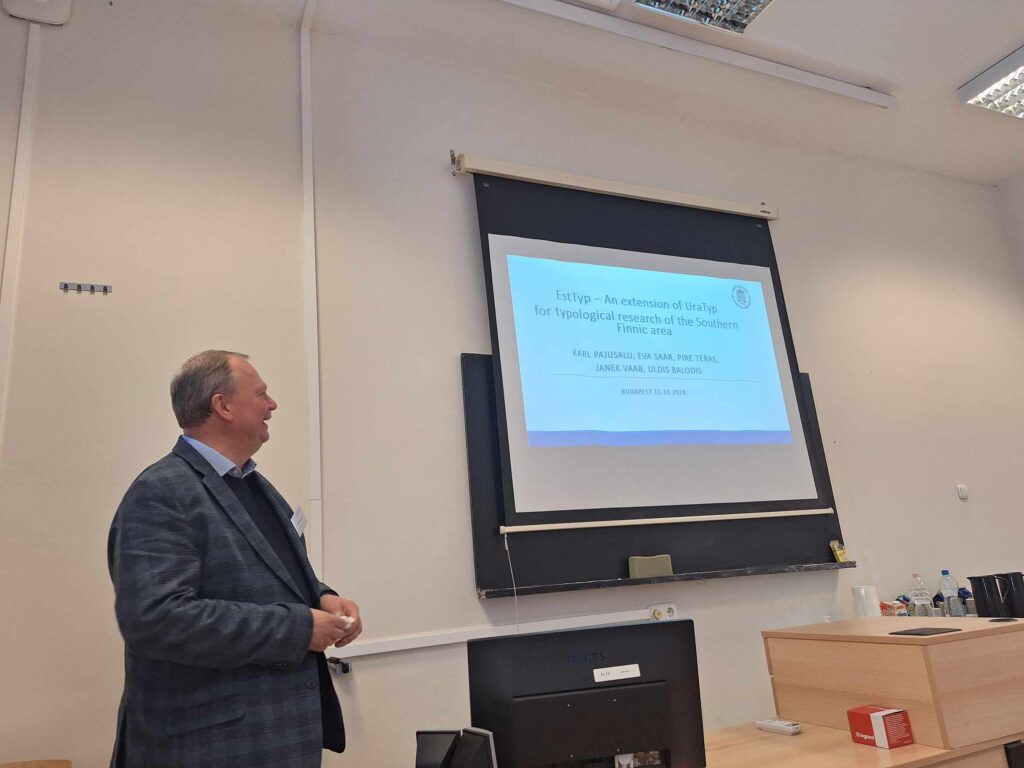
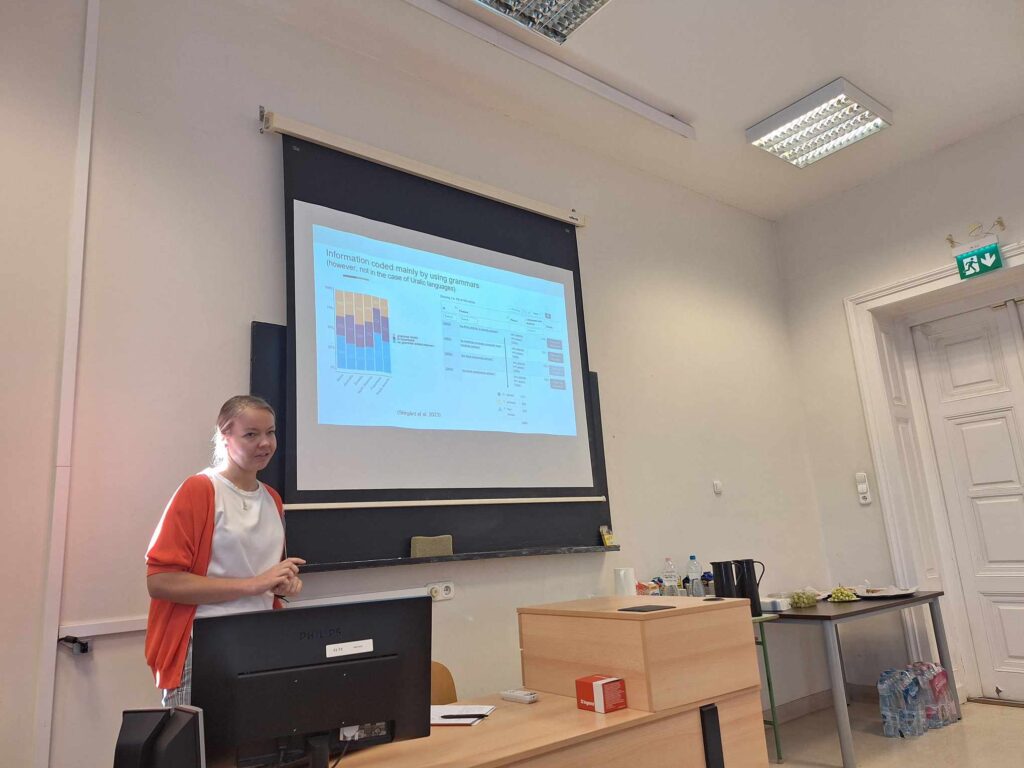
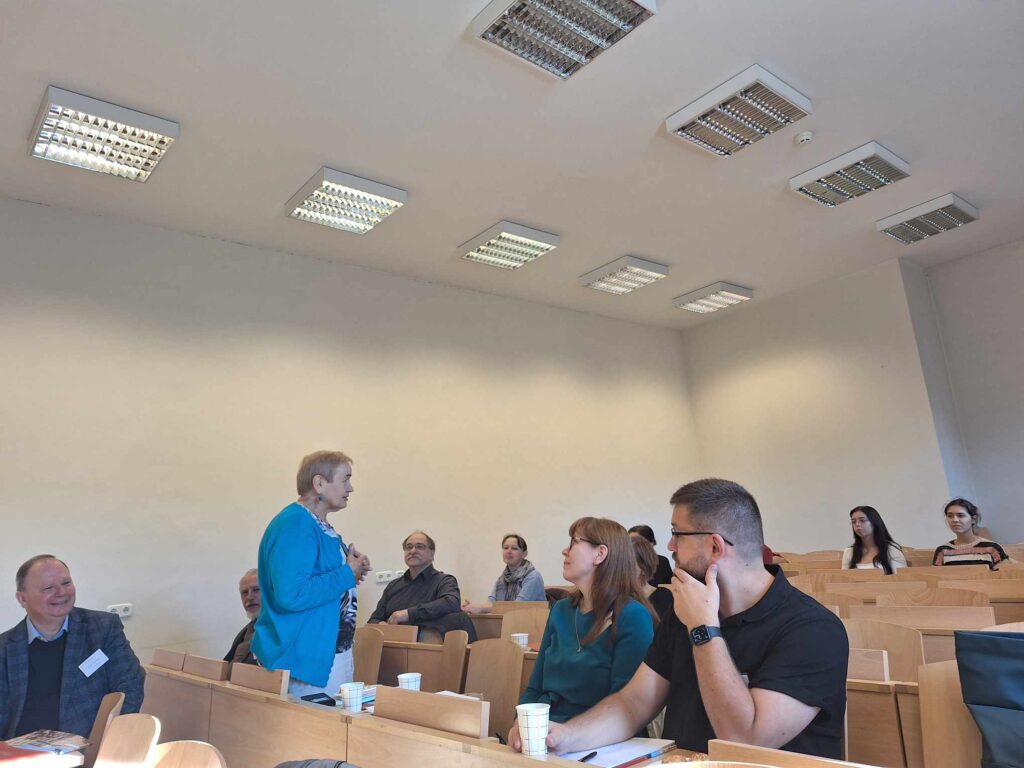
21 September
Karl Pajusalu and Uldis Balodis presented at the 2nd International Vidzeme Livonian Cultural Space Conference in Pāle, Latvia about shared nature terms in the lexicons of Salaca Livonian, Estonian, and Latvian. This was both a scientific event as well as an outreach to the local community showing the deep connections and ancient contact that exist between the languages of Latvia and Estonia. The principles and purpose behind the EstTyp database was also introduced to the attendees. (Photo courtesy of the Vidzeme Livonian Cultural Space facebook page)
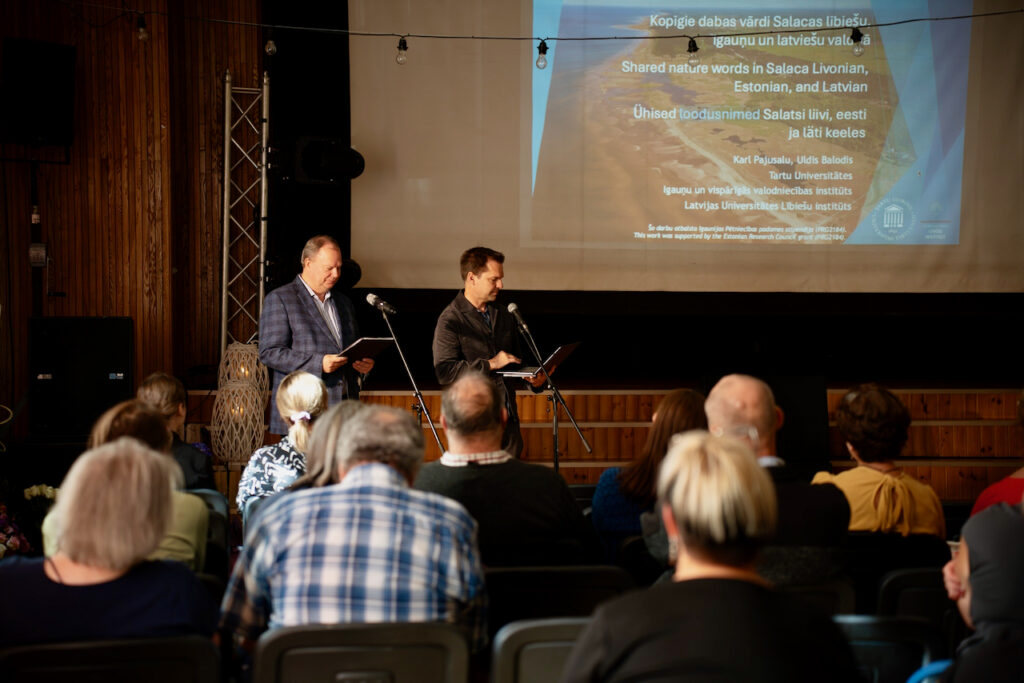
22 August
The project team members presented the poster “Southern Finnic polar questions in their areal context” at the 57th Annual Meeting of the Societas Linguistica Europaea at the University of Helsinki, 22 August 2024. (from left: Eva Saar, Miina Norvik, Uldis Balodis, Helle Metslang, Karl Pajusalu)
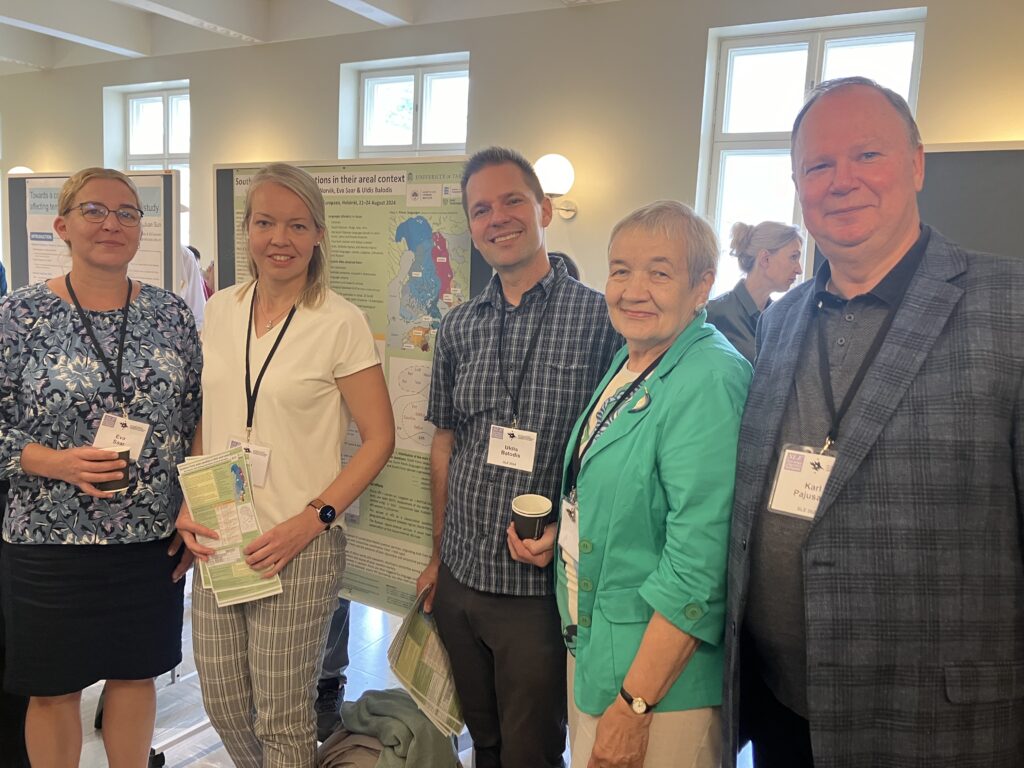
16 August
Project team member Uldis Balodis organized the 4th Lutsi Studies Seminar at the Ludza Regional History Museum in Ludza, Latvia. The participants and presenters included project team members Karl Pajusalu, Helle Metslang, Eva Saar, Pire Teras as well as colleagues from the Estonian National Museum (Indrek Jääts), the University of Latvia (Lidija Leikuma), and Liepāja University (Dace Markus). The Lutsi seminar continued a tradition of bringing together scholars of topics relating to Lutsi and South Estonian in general as well as connecting these topics to local history and Latgalian language. This year’s seminar included a special linguists’ seminar for project members and the invited scholars to discuss topics relating to Finnic-Baltic language contact as well as the ESTTYP database questions in particular.
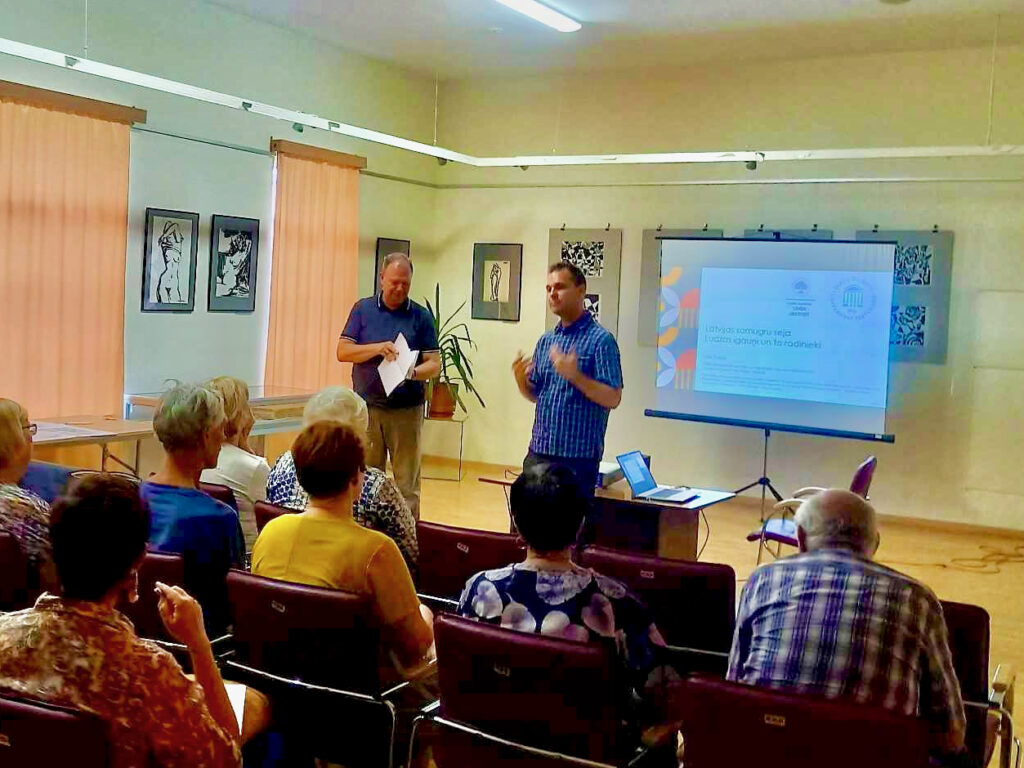
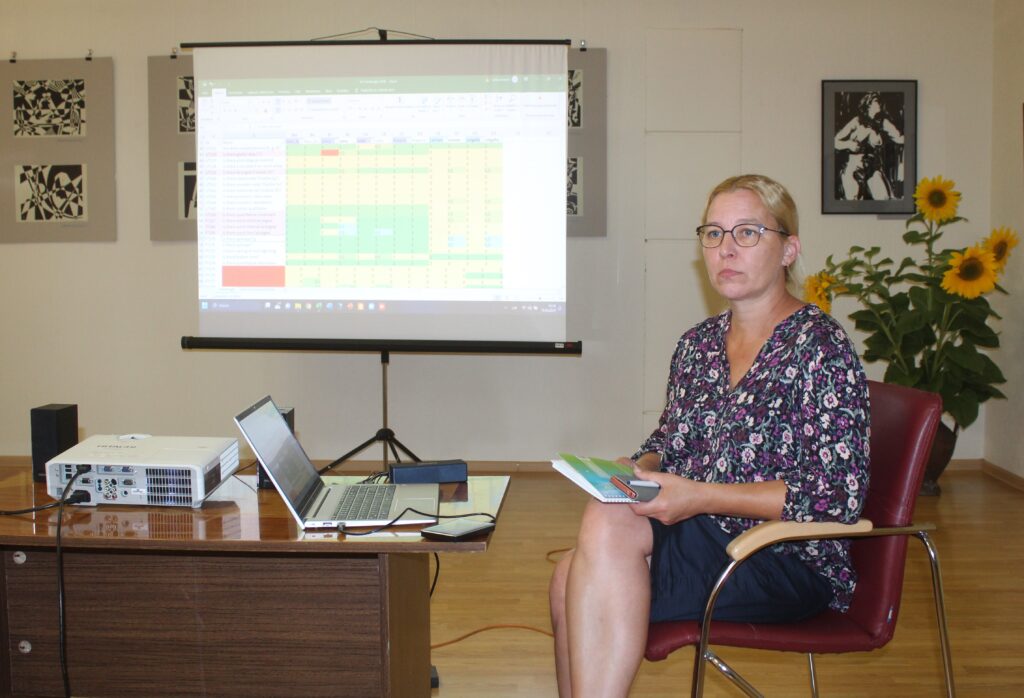
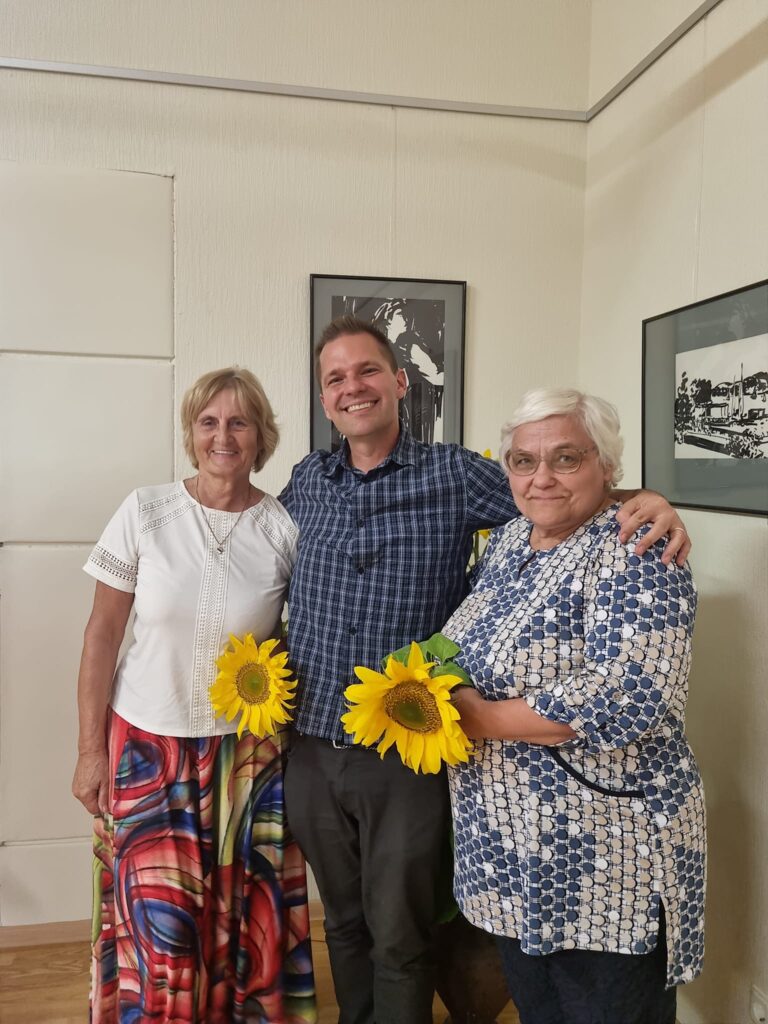
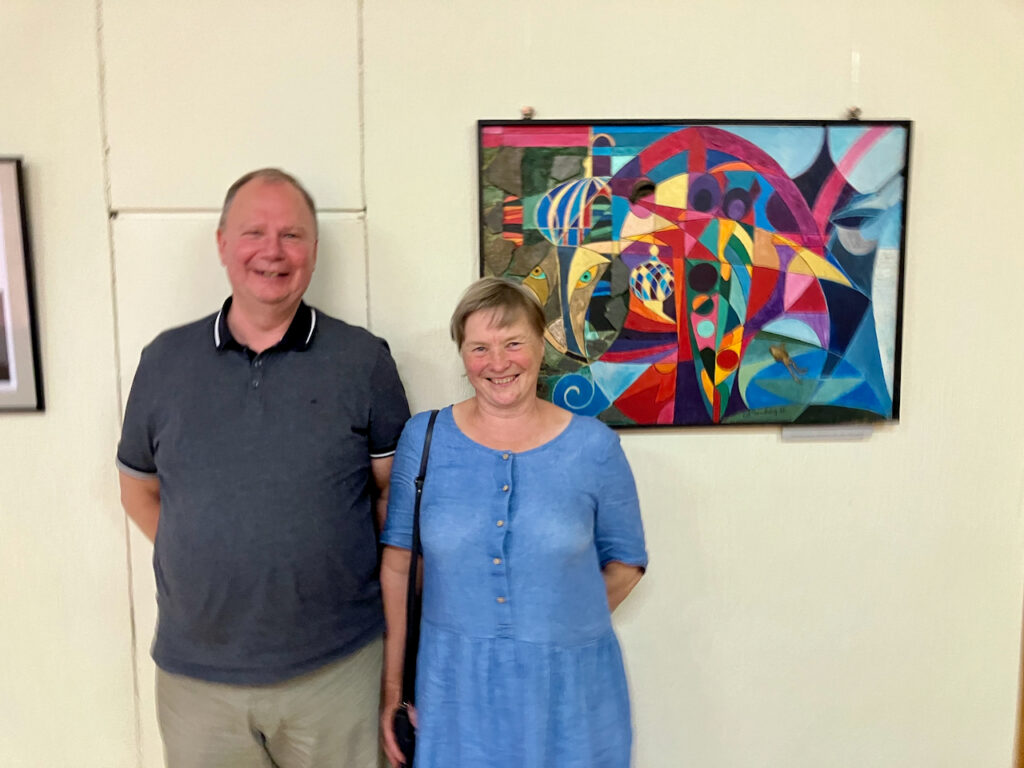
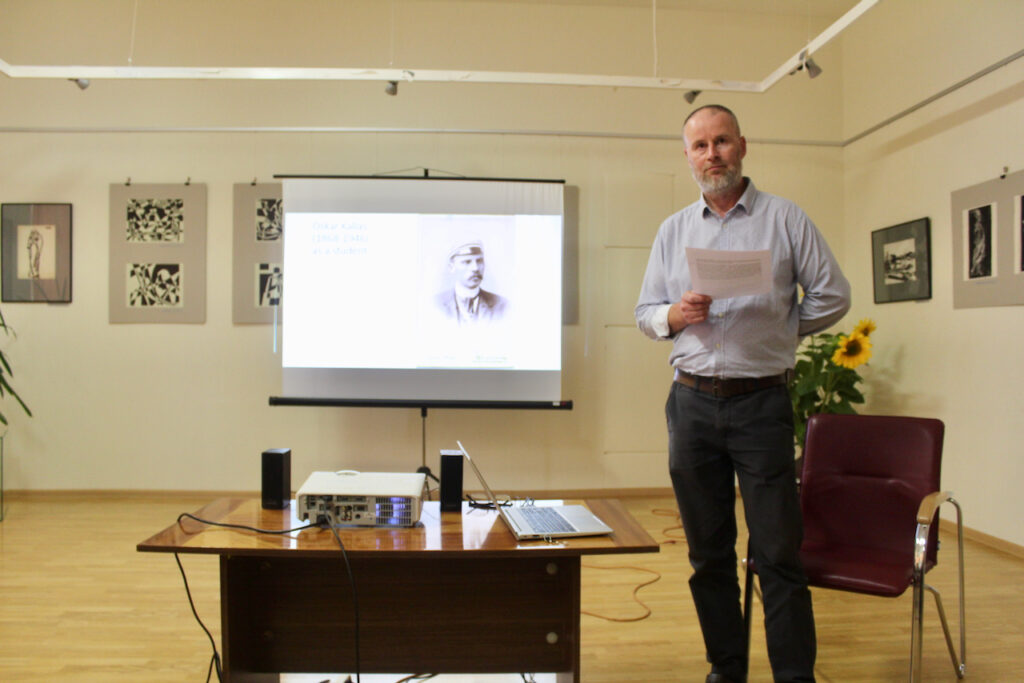
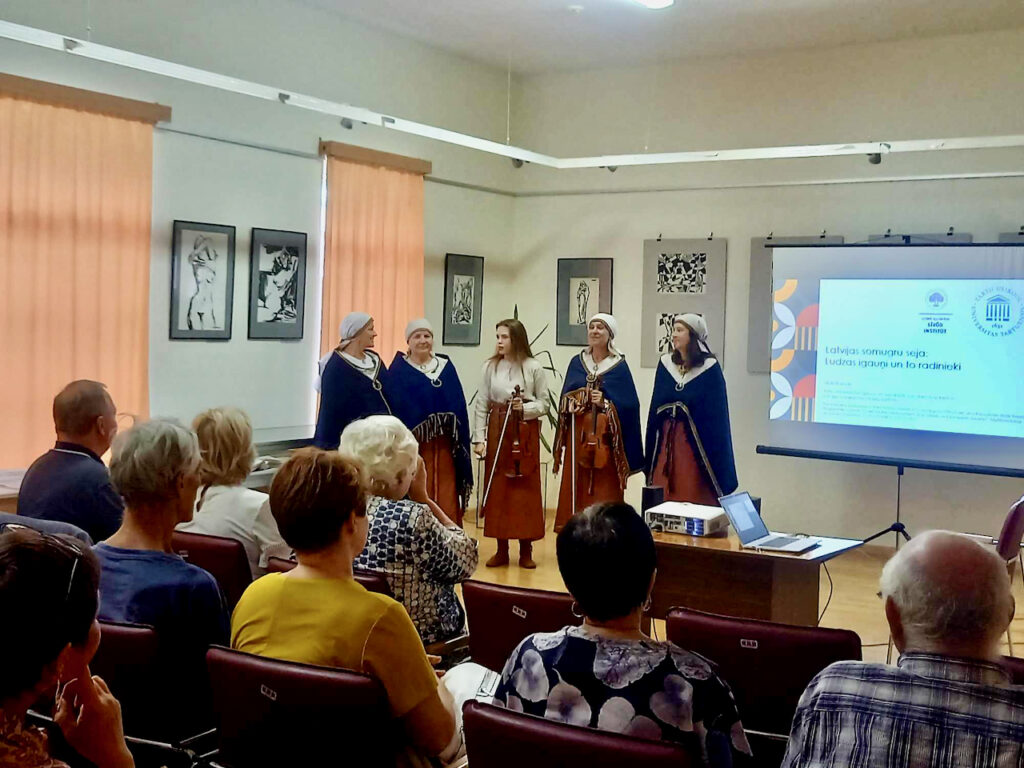
26 July – 4 August
Project members participated in different capacities in the 4th Livonian Summer University, which was organized by the University of Latvia Livonian Institute in Kuoštrõg (Košrags) village on the Livonian Coast in northwestern Latvia. Miina Norvik was the Livonian language teacher for the advanced level student group. Karl Pajusalu and Uldis Balodis lectured at the university including on topics relating to the project. Janek Vaab attended the summer university as a student in order to deepen his knowledge of Livonian. The project members also conducted fieldwork on the Livonian Coast and worked with heritage speakers of Livonian who also participated in the summer university in an advisory capacity.
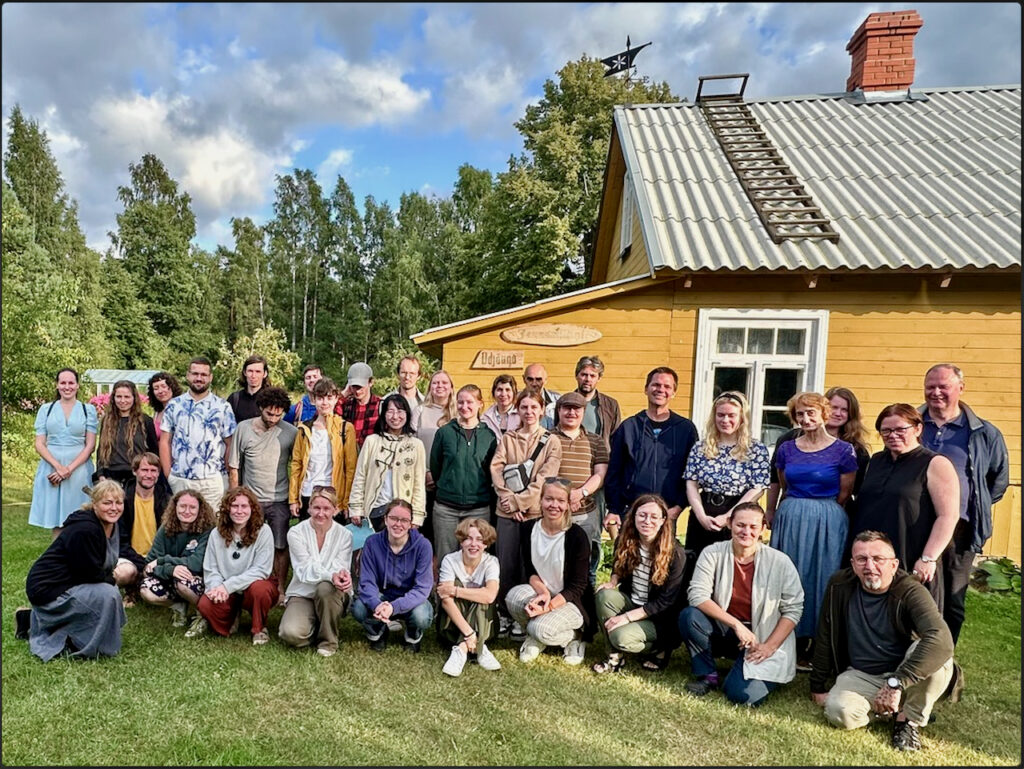
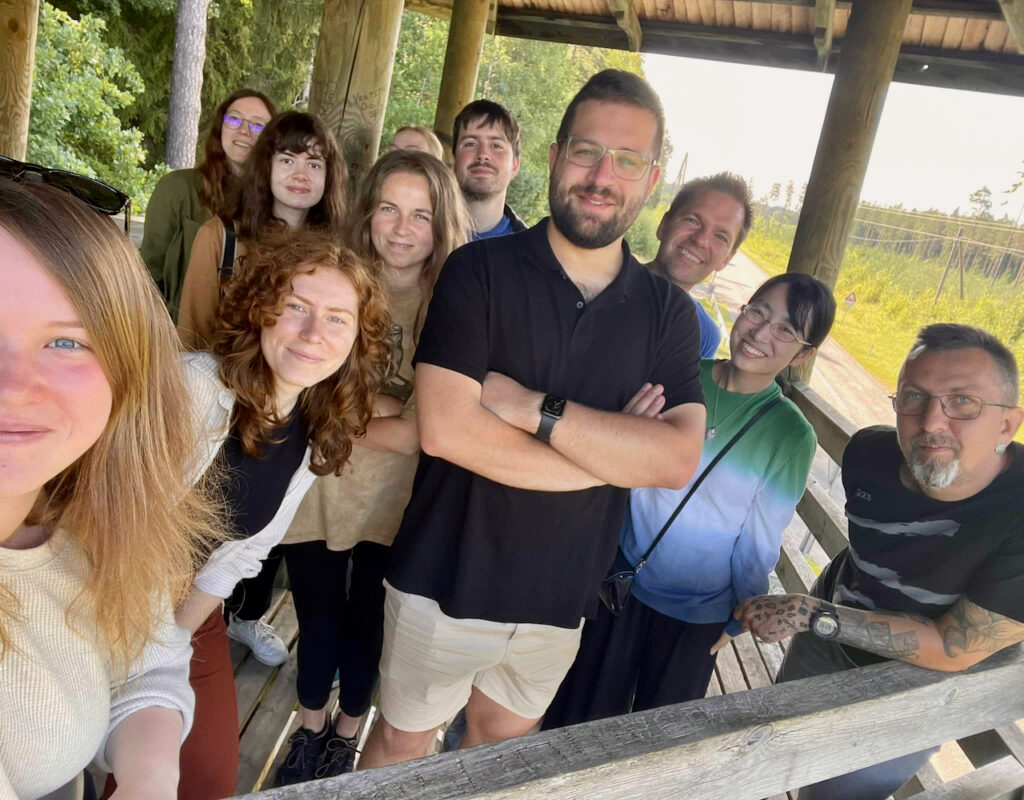
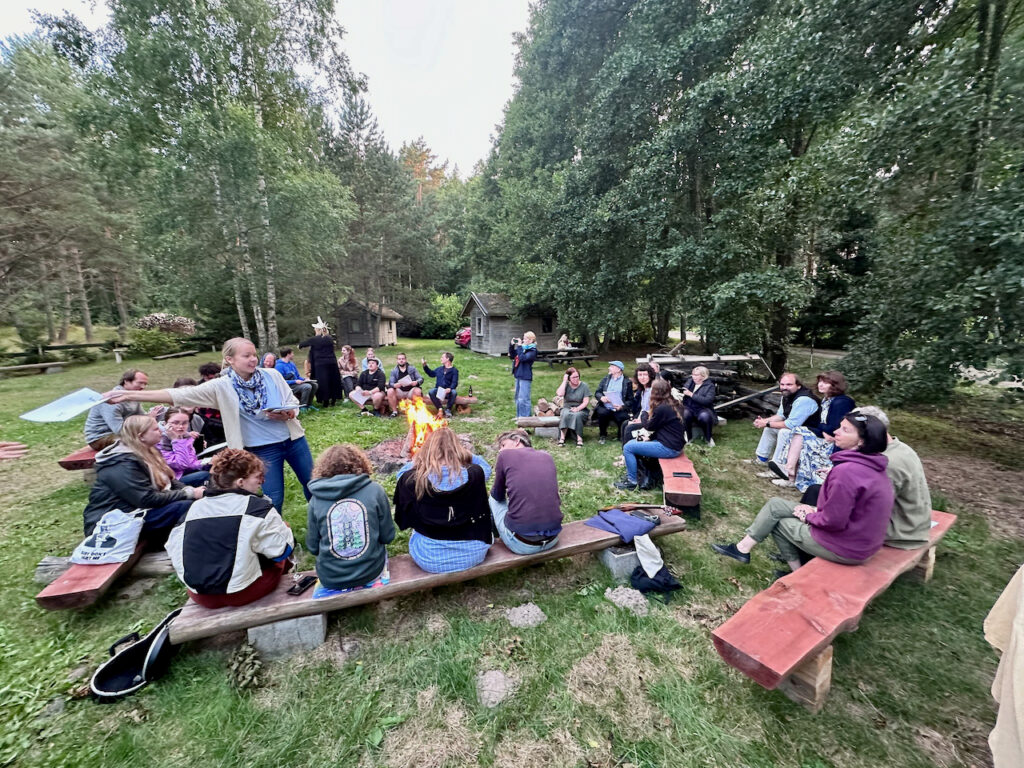
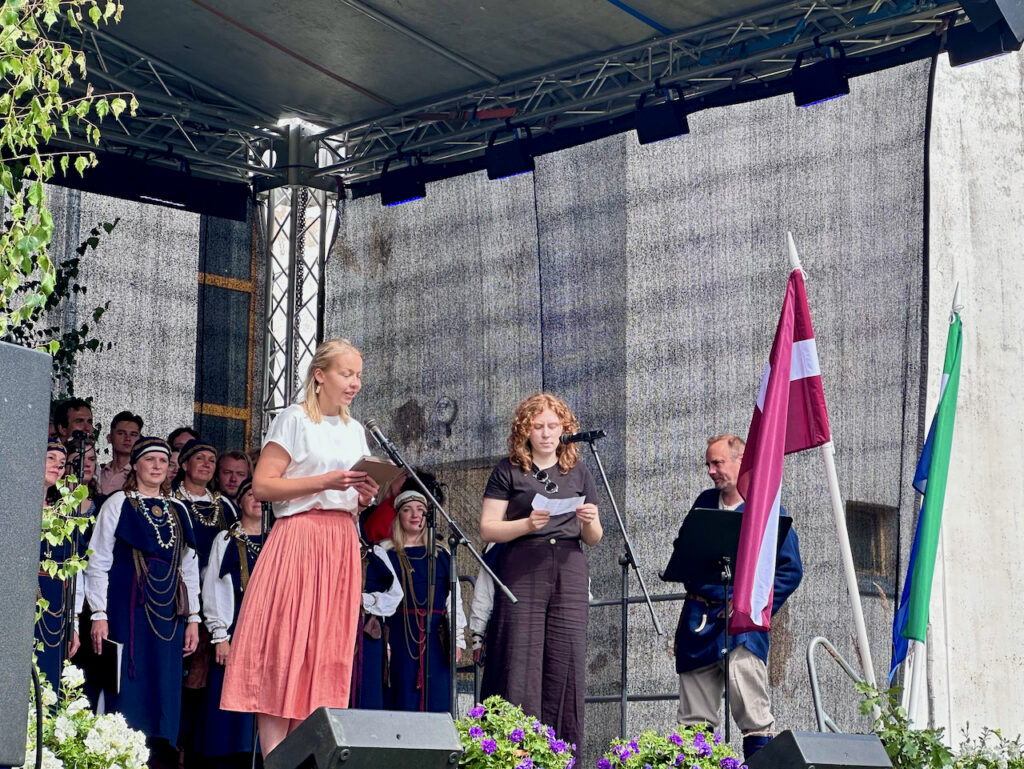
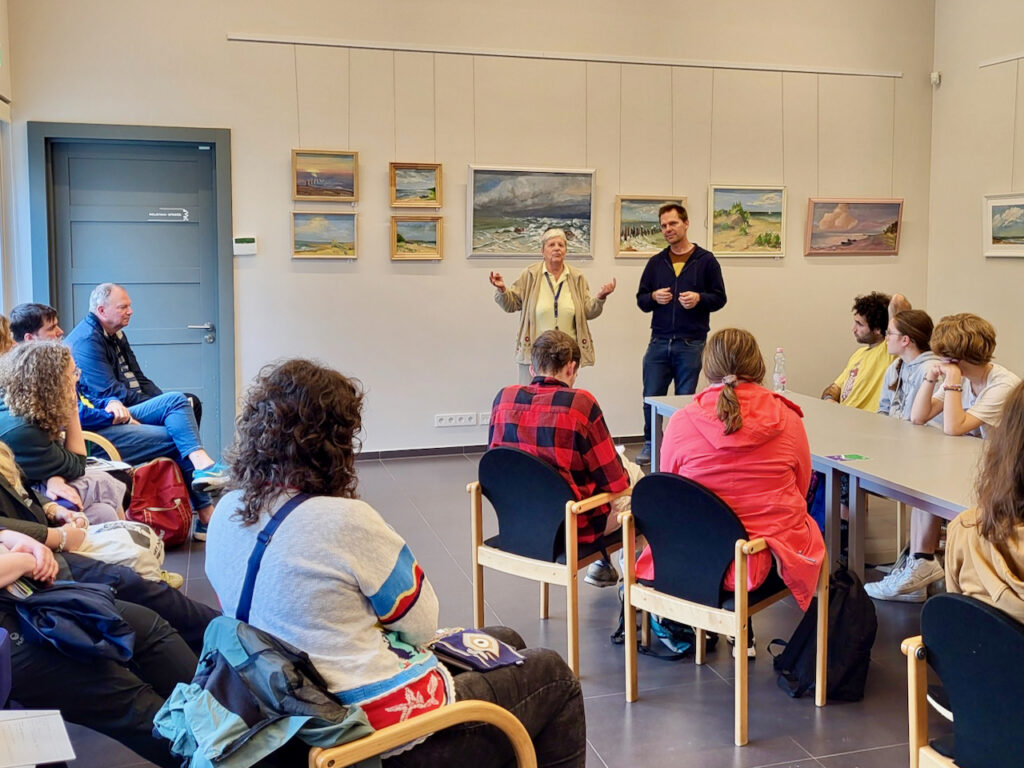
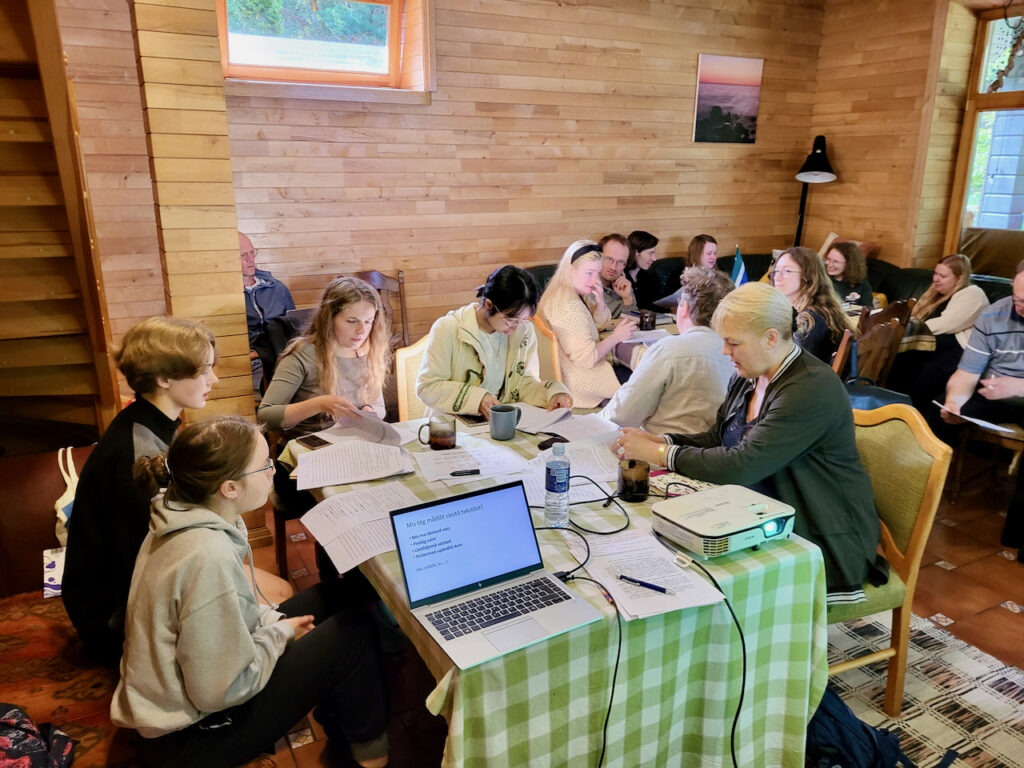
26-28 June
The project members participated and presented at the “Livonica 3 + Minor Finnic languages 2 = 5” conference at the University of Latvia Livonian Institute in Rīga. Joint presentations included “How and why does Livonian differ from other Finnic languages?” (Karl Pajusalu, Miina Norvik, Eva Saar, Uldis Balodis) and “Dynamics of the Courland Livonian case system in the context of the Central Baltic area” (Helle Metslang, Miina Norvik, Eva Saar). Individual presentations by presentations by project members included: “Distribution of a glottal stop in South Estonian lative, illative and allative adverbs” (Janek Vaab), “Livonian derivational morphology” (Patrick Juho-Ville O’Rourke), “Kui se līb engliškīelkõks? Creating the first major Livonian-English dictionary translation” (Uldis Balodis).


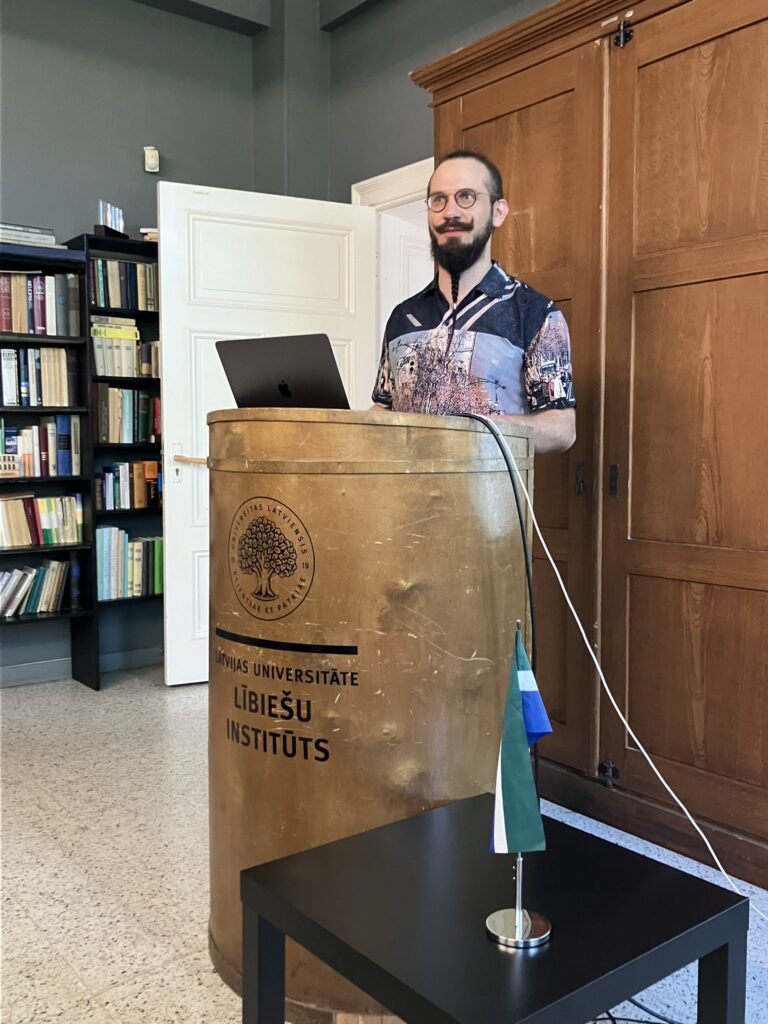
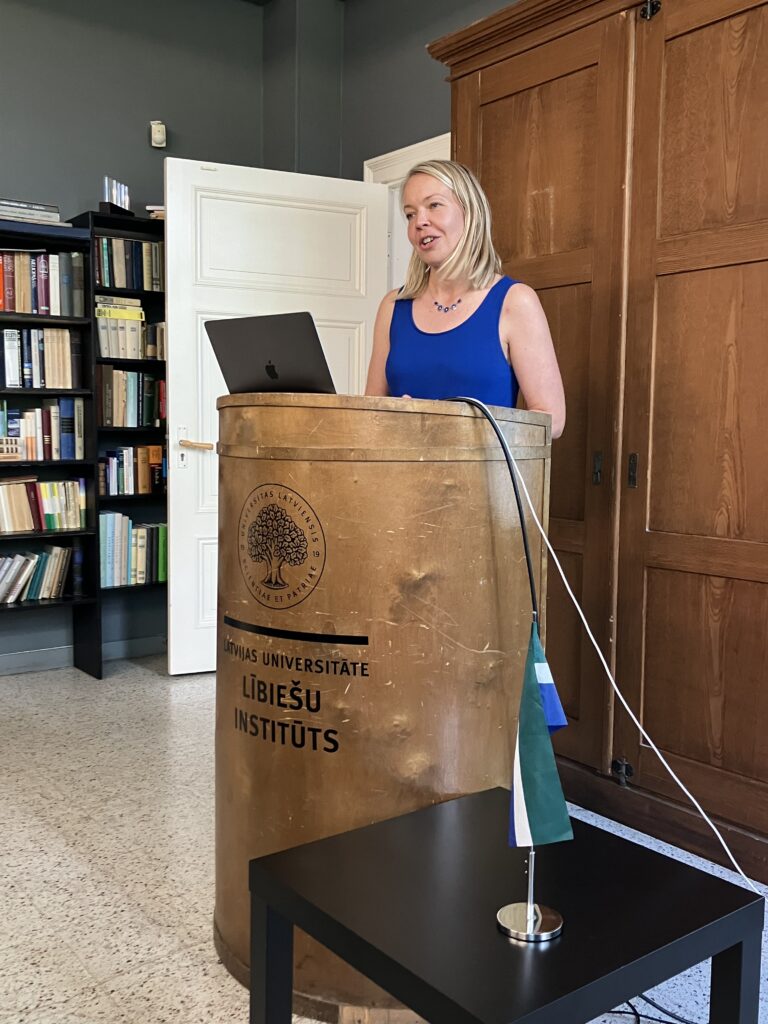
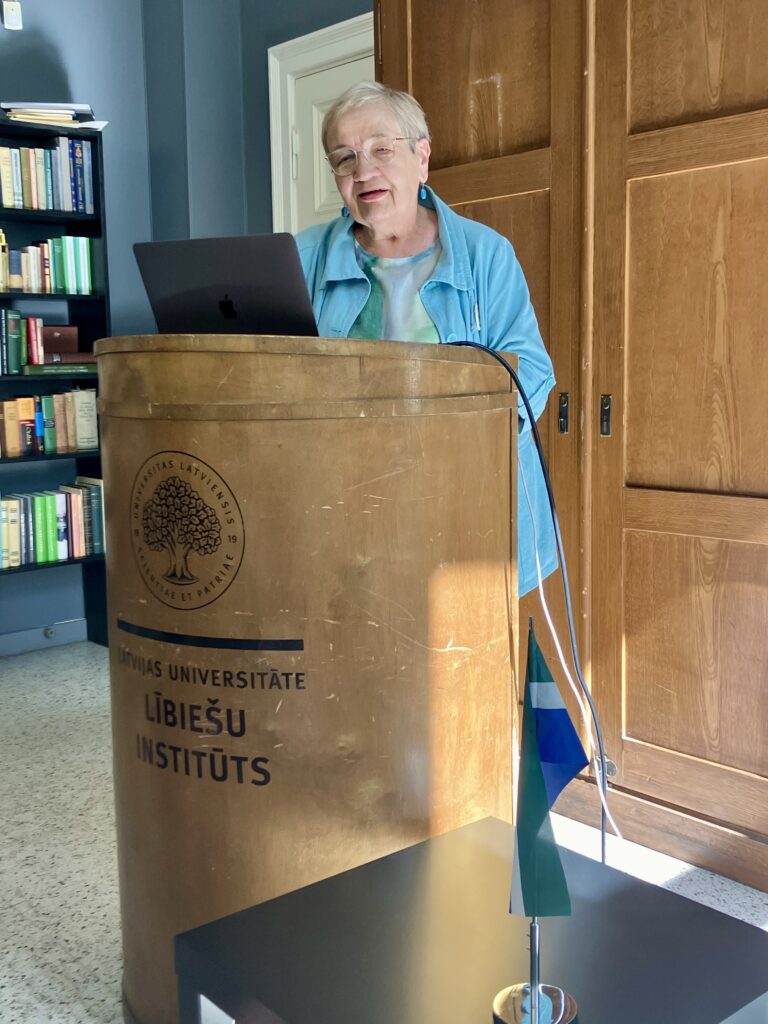
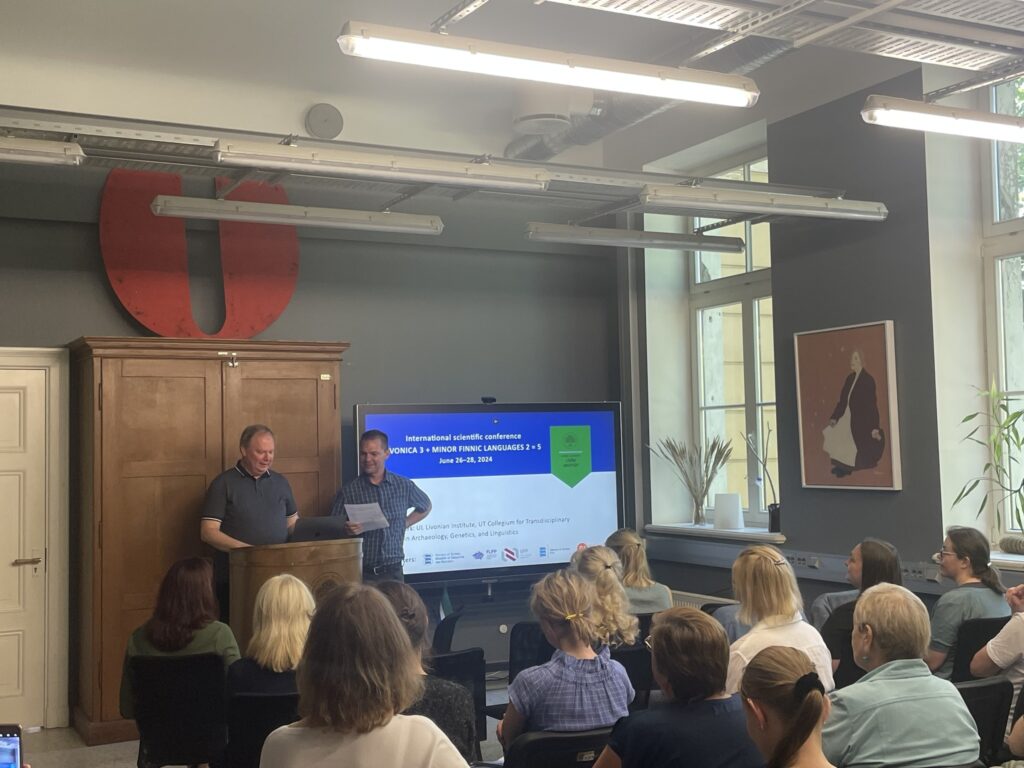
23-26 May
The project group participated in a joint meeting on Ruhnu Island in the Gulf of Rīga led by University of Tartu Associate Professor of Swedish Language Eva Liina Asu-Garcia who is leading a two-year project to catalogue existing Ruhnu Swedish documentation and make these materials available to Ruhnu Swedish descendants and current residents of Ruhnu. The meeting included not only the project group but also members of the Livonian and Ruhnu Swedish community, current Ruhnu residents as well as the University of Tartu, University of Latvia Livonian Institute, and the Ruhnu Culture Space (Ruhnu Kultuuriruum). The project group was able to acquaint attendees with the project’s work and plans as well as to conduct fieldwork with Livonian language speakers who were in attendance at the meeting.
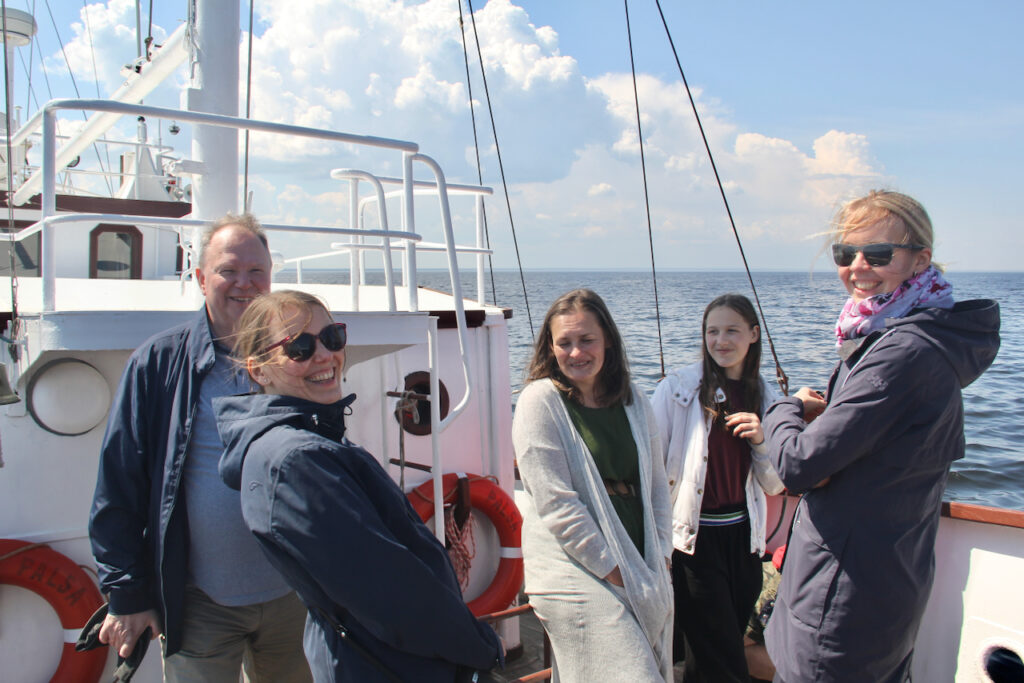
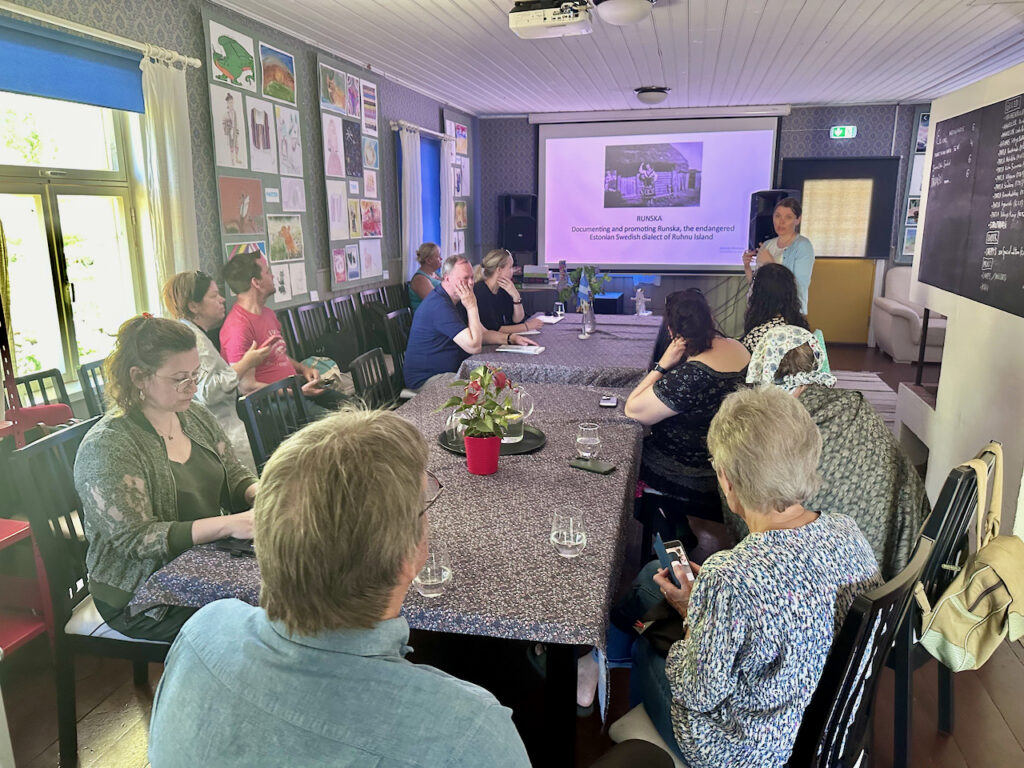
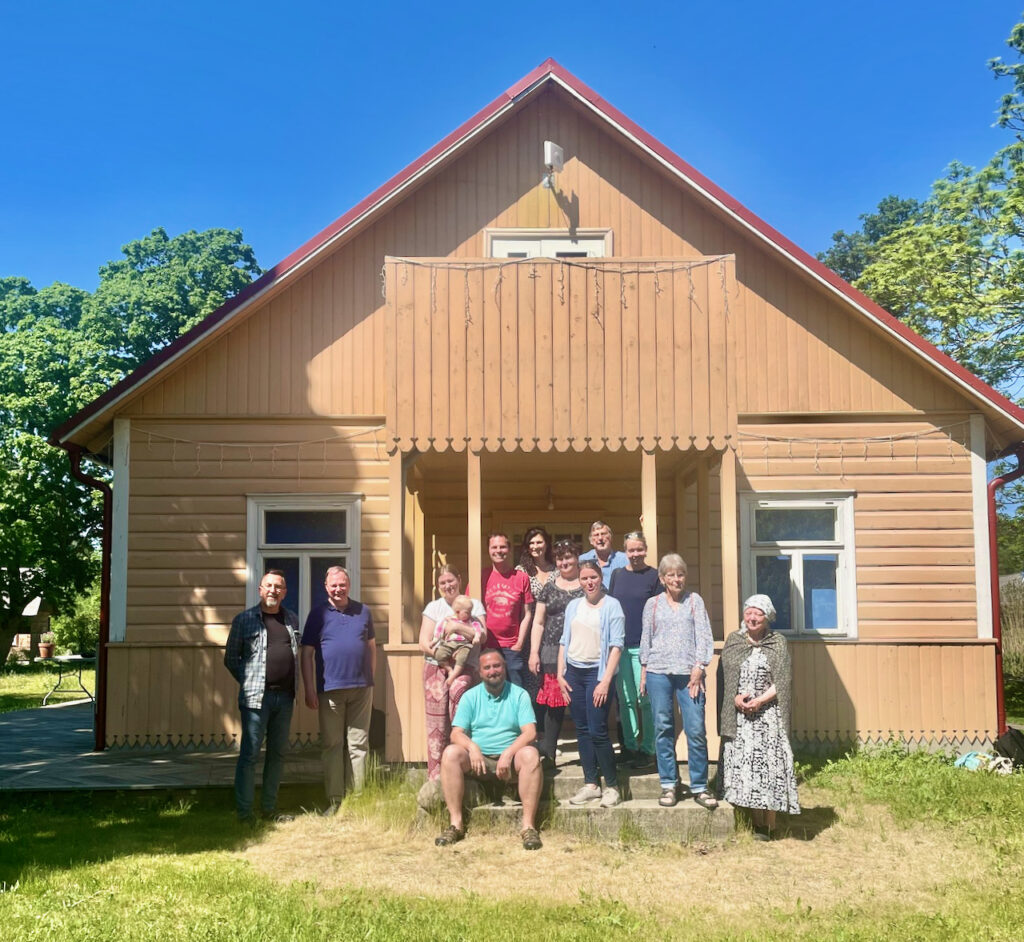
4 May
Project members Karl Pajusalu and Uldis Balodis accompanied by their colleague linguist Santeri Junttila conducted fieldwork at sites in the historical Leivu region in northeastern Latvia as well as in regions further to the south near Cesvaine and Lake Lubāns, which may be the location of other undocumented Finnic populations due to the presence of place names with a form or meaning possibly connected to Estonians (for more on these place names see here and for more on Finnic-like features in Latvian subdialects see here).
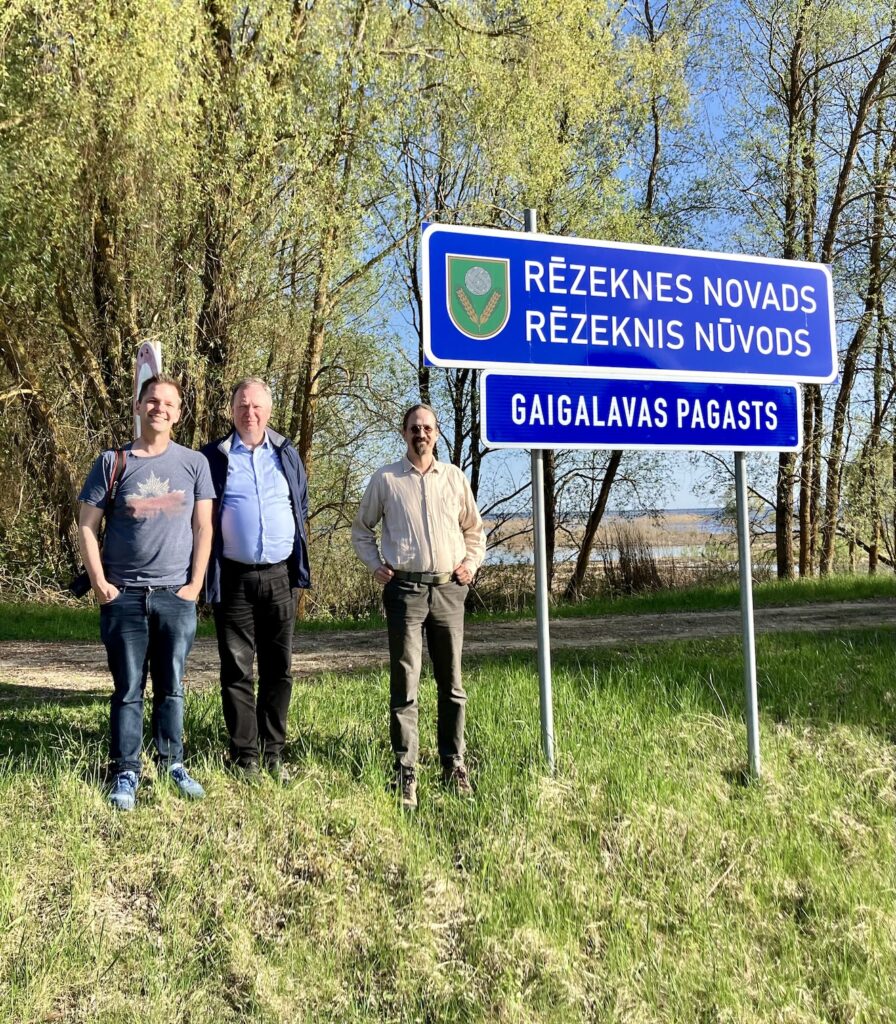
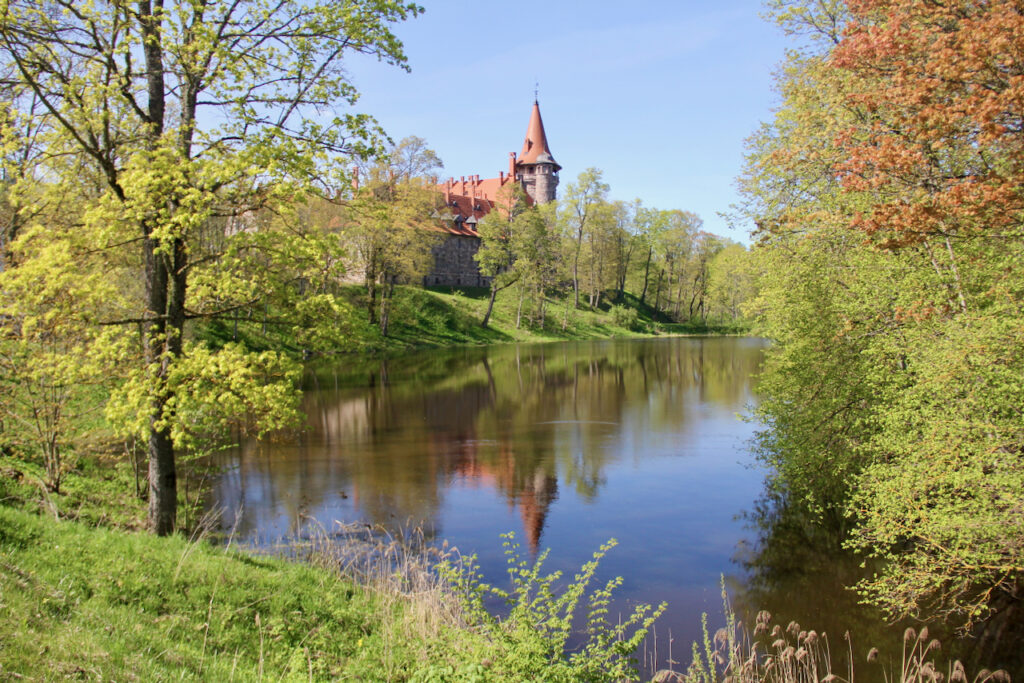

3 May
Karl Pajusalu was a co-organizer of and presenter at the event celebrating the multidisciplinary “Eesti juured” (Estonian Roots) project. This project has brought together specialists from many fields to study topics and advance research on Estonian origins and development. The project has also resulted in the creation of an extensive online resource on these topics available here. (Photo of Karl Pajusalu speaking at the event; from the Eesti juured facebook page.)
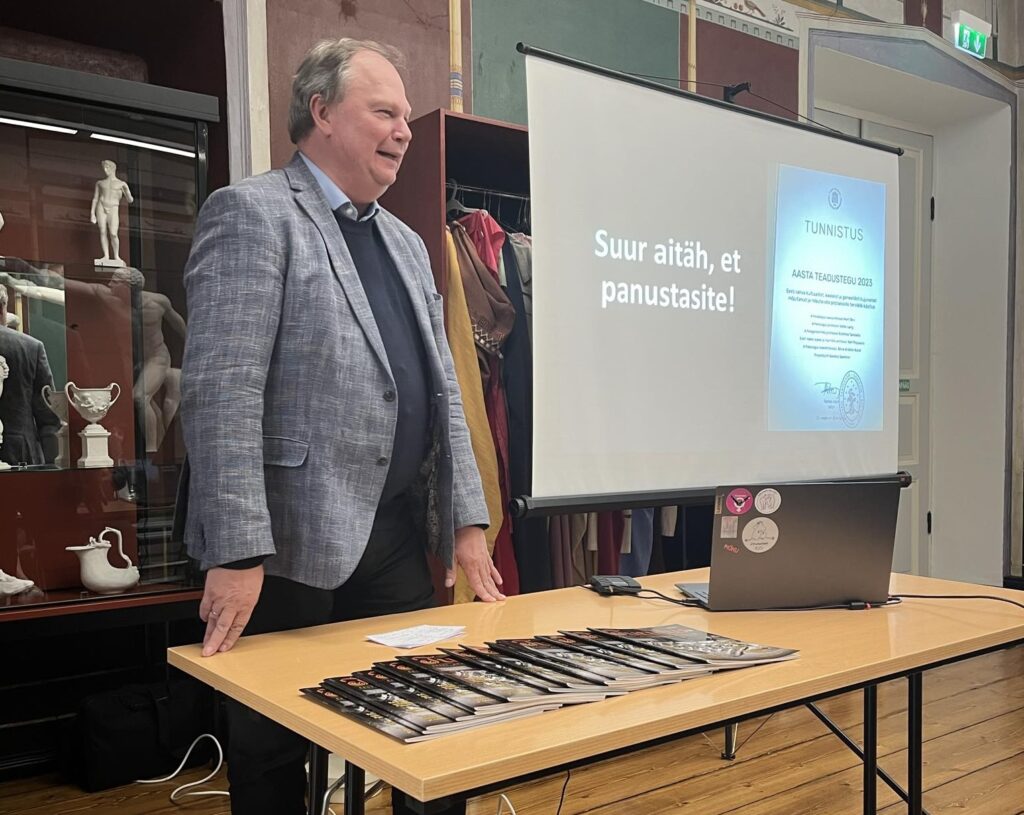
11 April
Project members Karl Pajusalu, Helle Metslang, Miina Norvik, Eva Saar, and Pire Teras gave the presentation “Eesti keeleala tüpoloogilise liigenduse väljavaated” (Prospects for the typological division of the Estonian language area) at the 1st Estonian Annual Conference of the Humanities where they discussed the typological differences among Estonian varieties and how this is reflected with respect to the linguistic features included in the UraTyp database.
Header image: Ingrian language field notes recorded by Paul Ariste from Nadjoža (Nadežda) Lippert in Tarinaisi (Andreevshchina), Russia, 1956. (Source: University of Tartu Archives of Estonian Dialects and Kindred Languages, record number SUPP0008)


